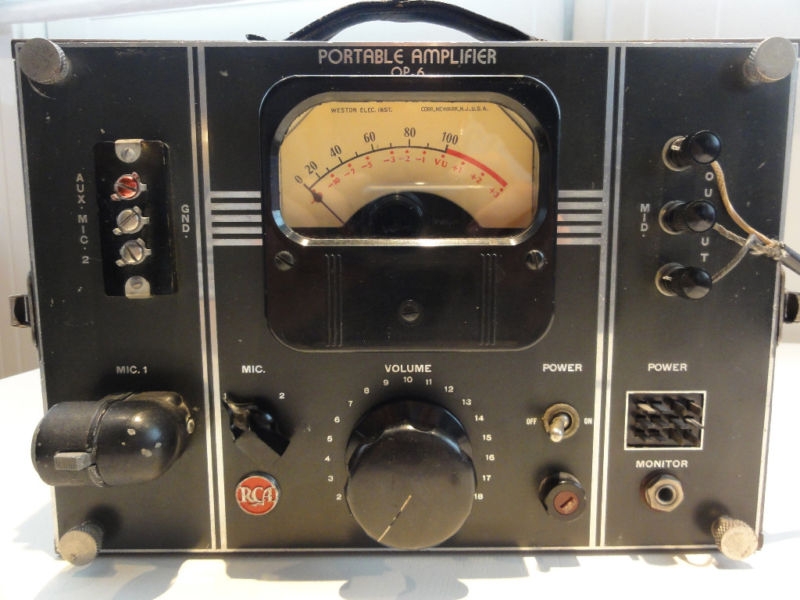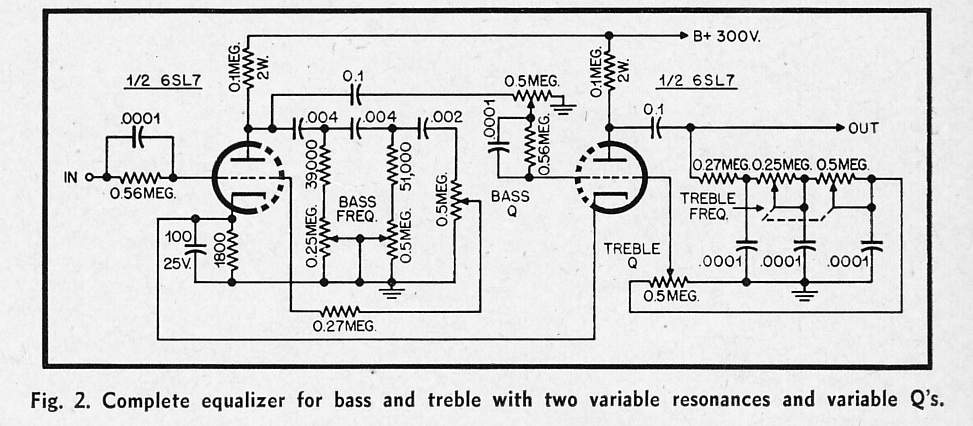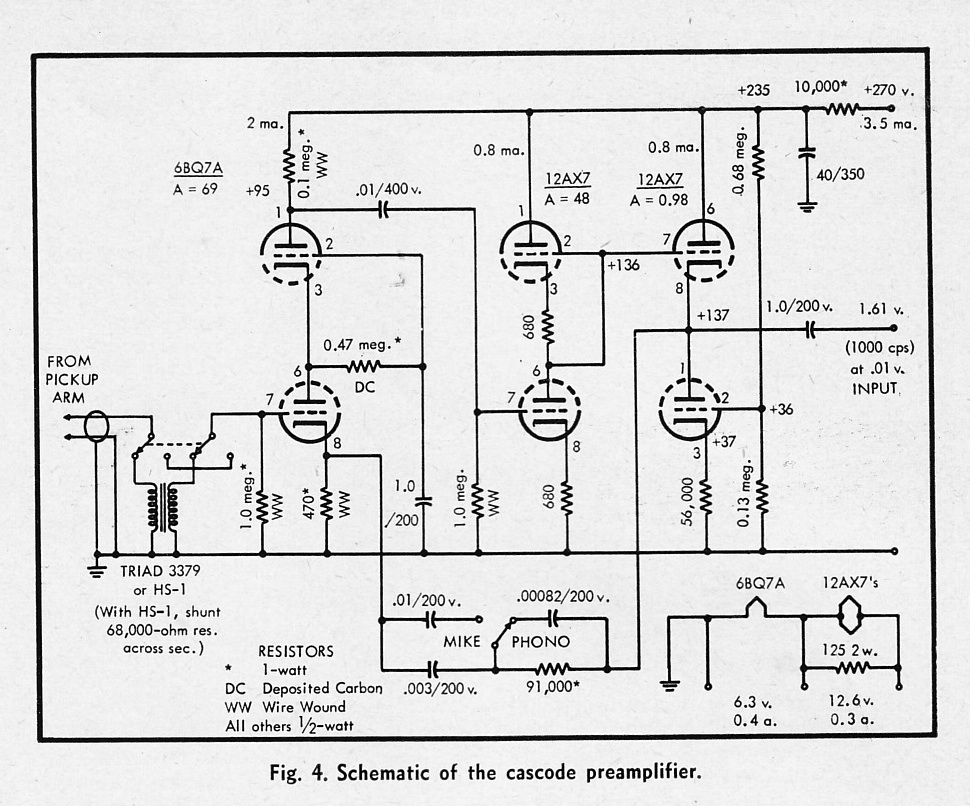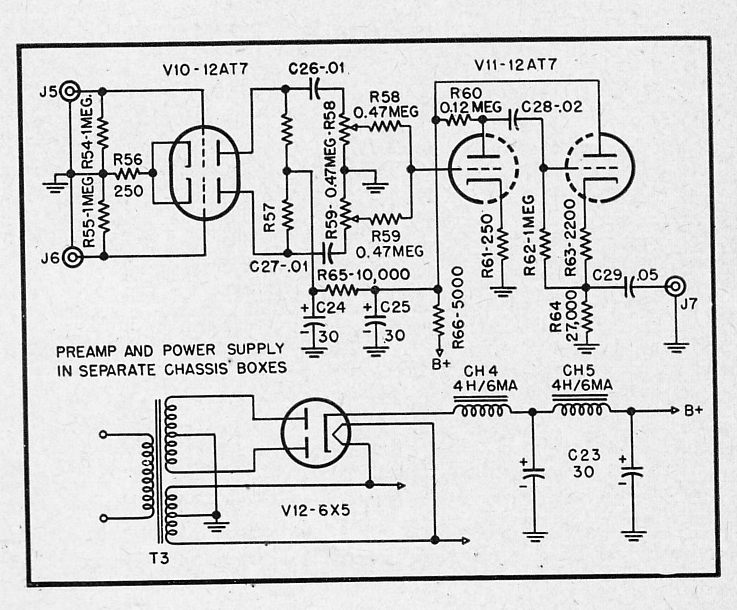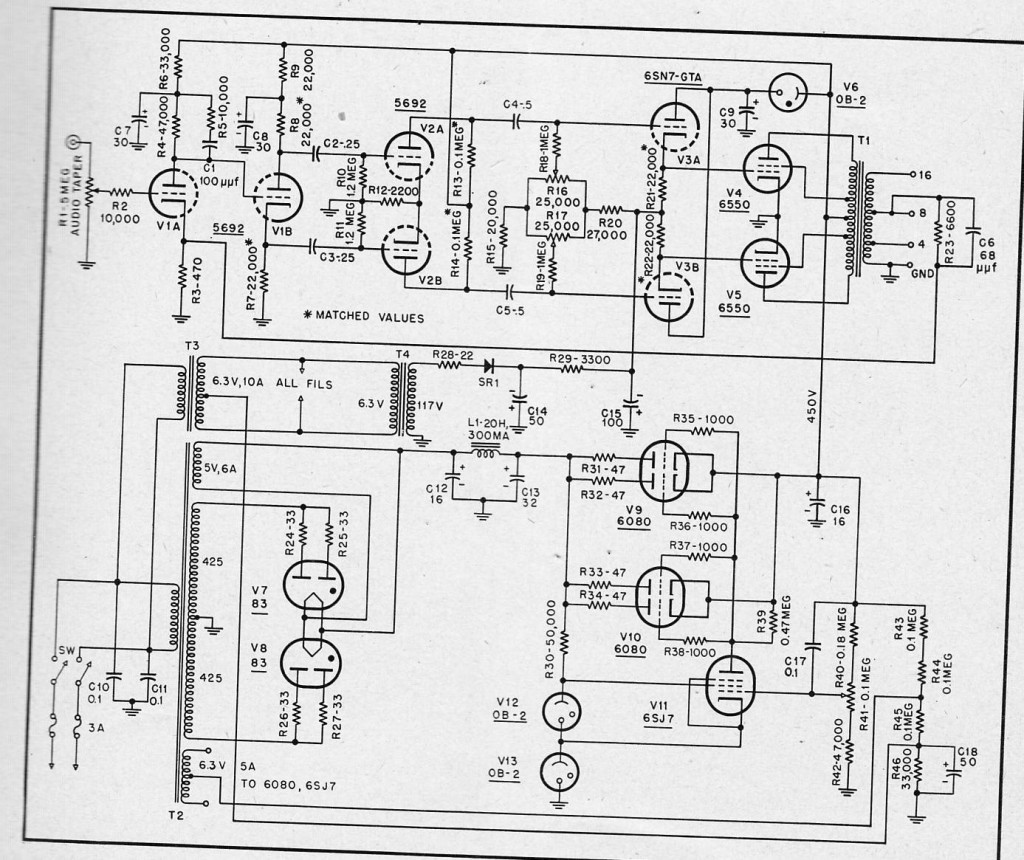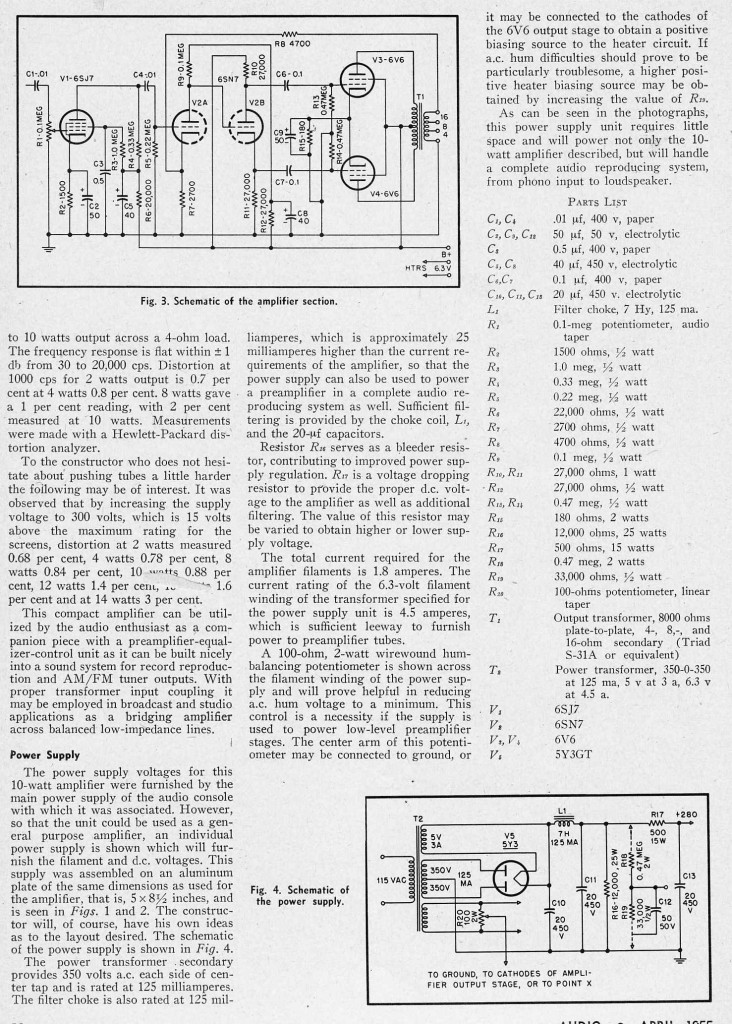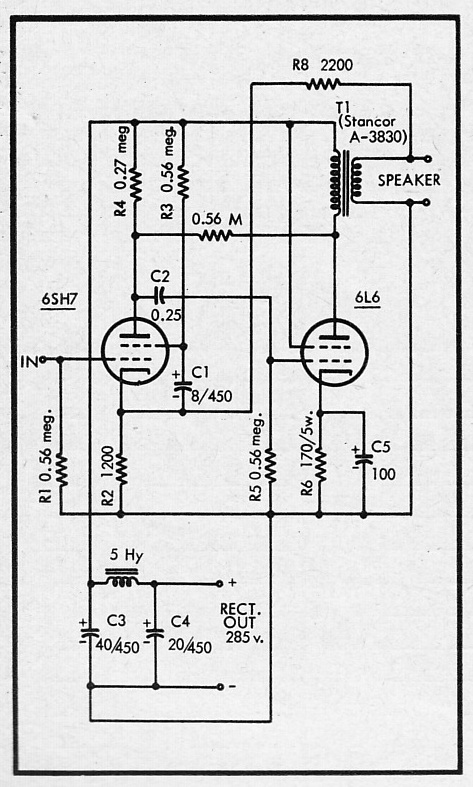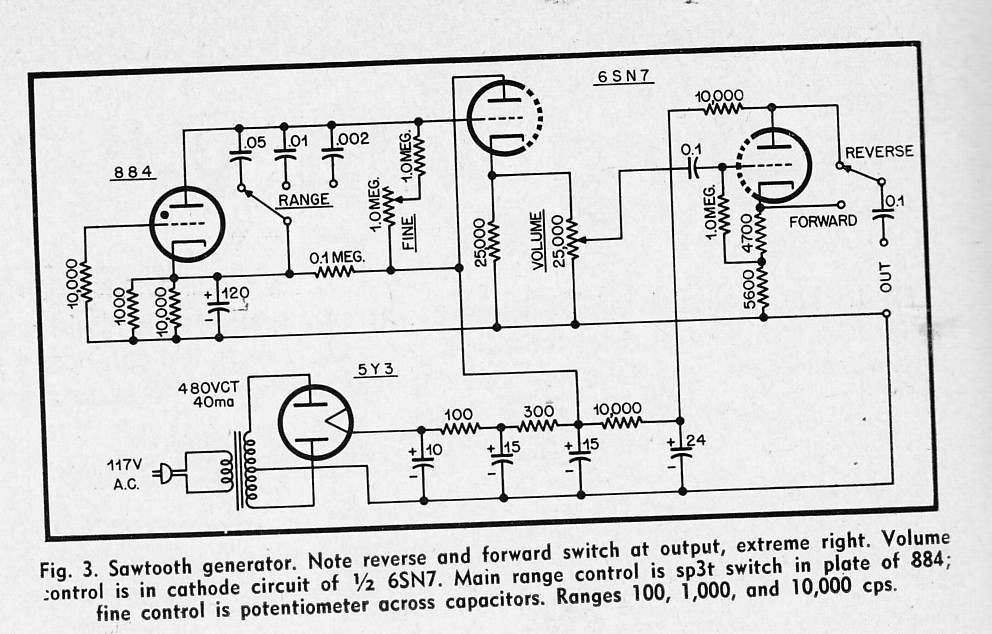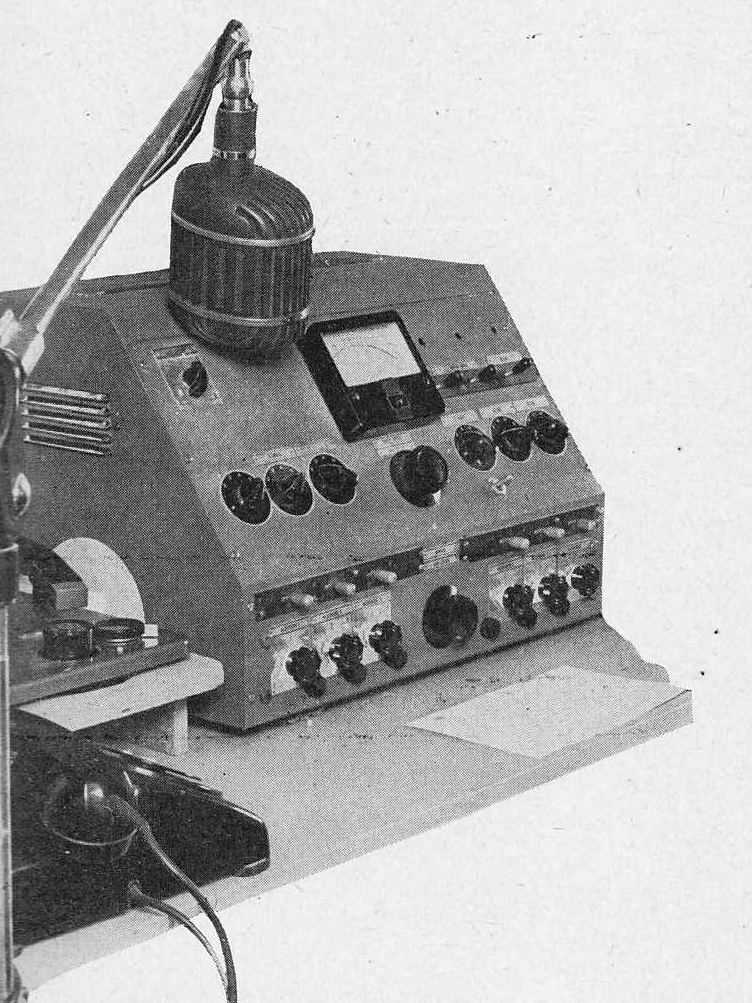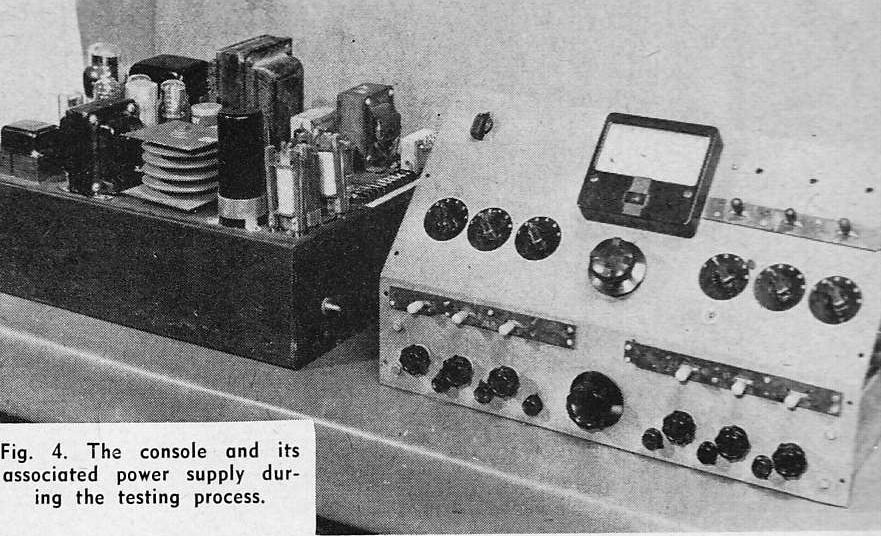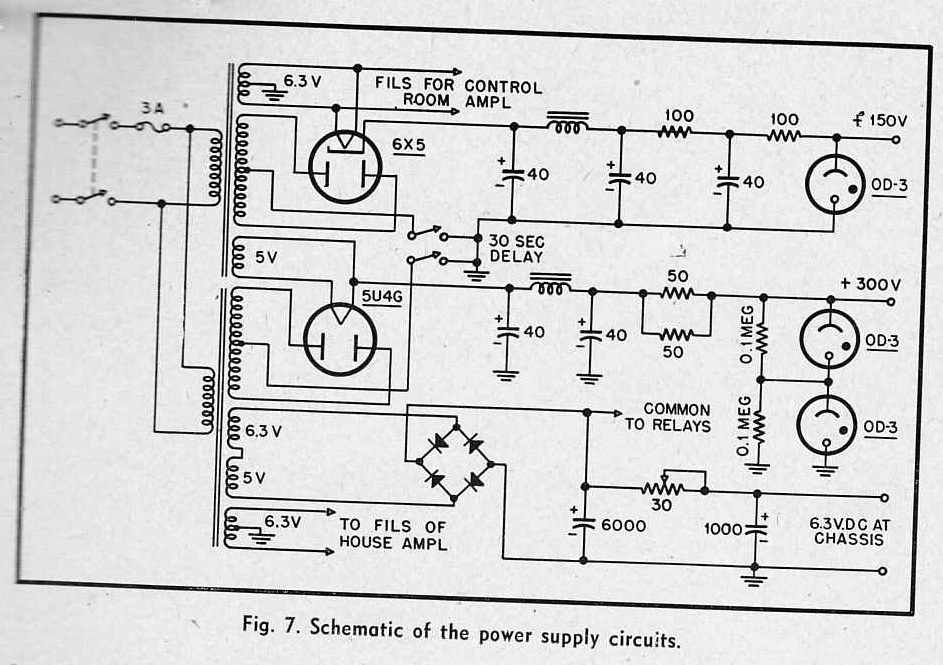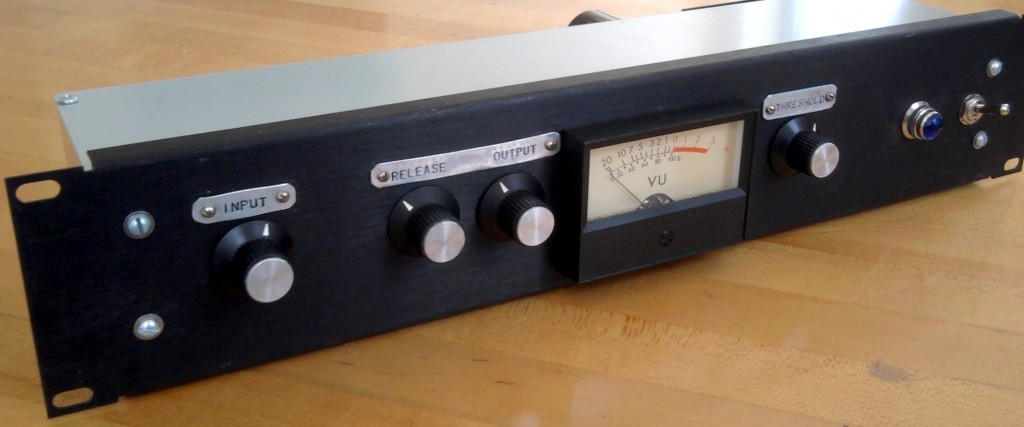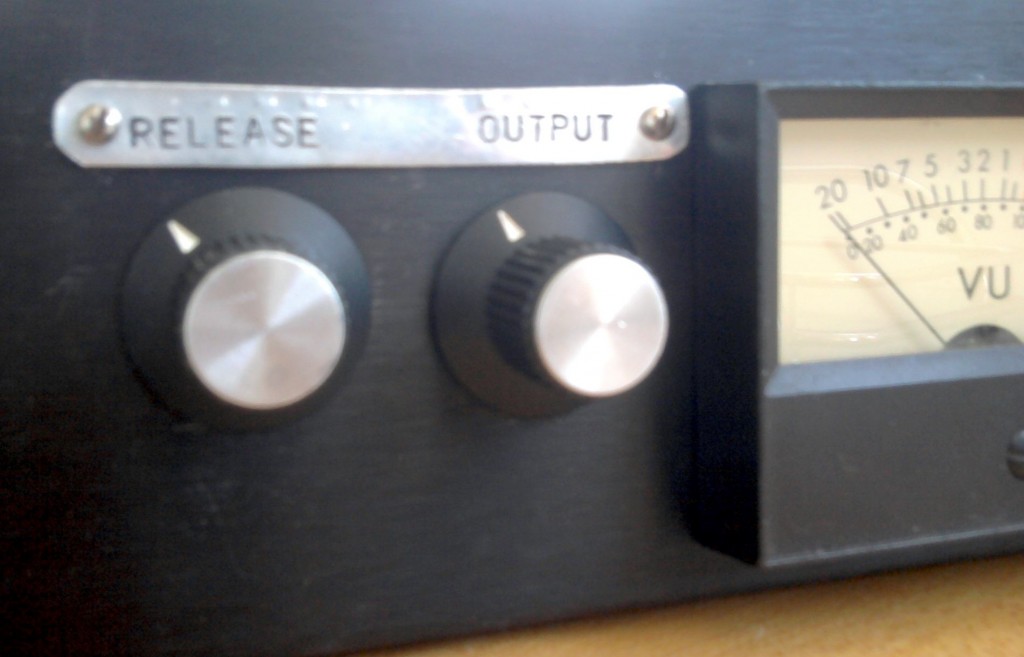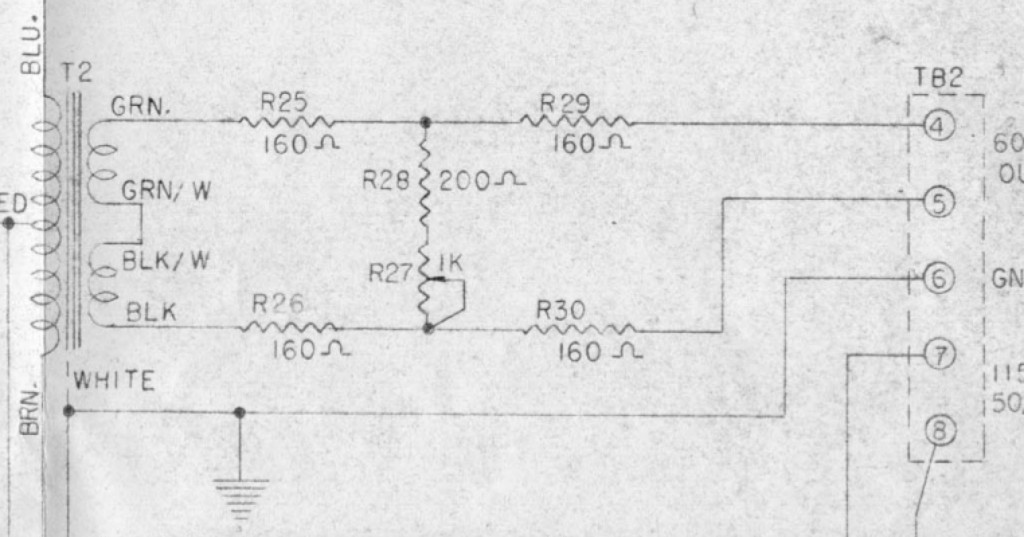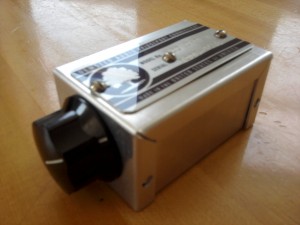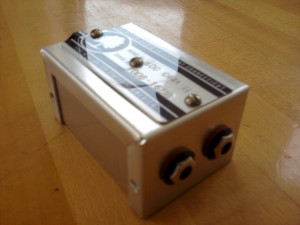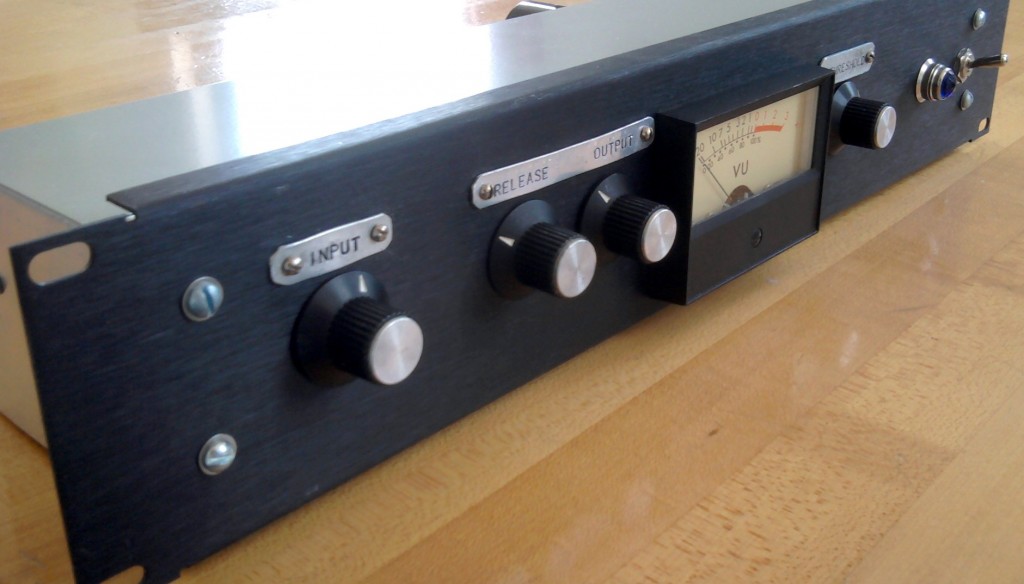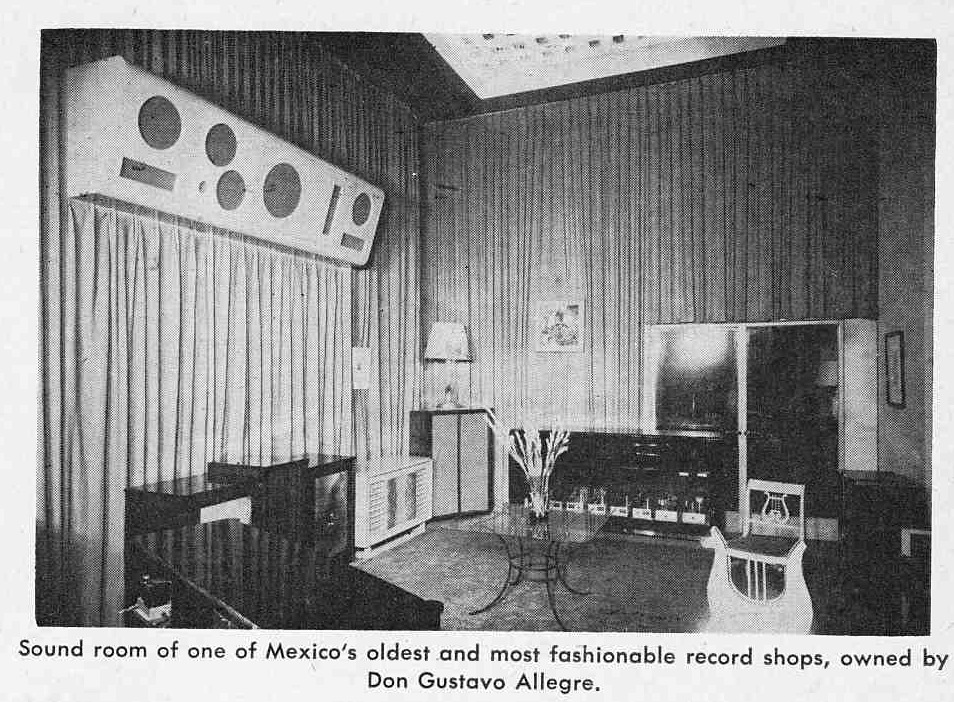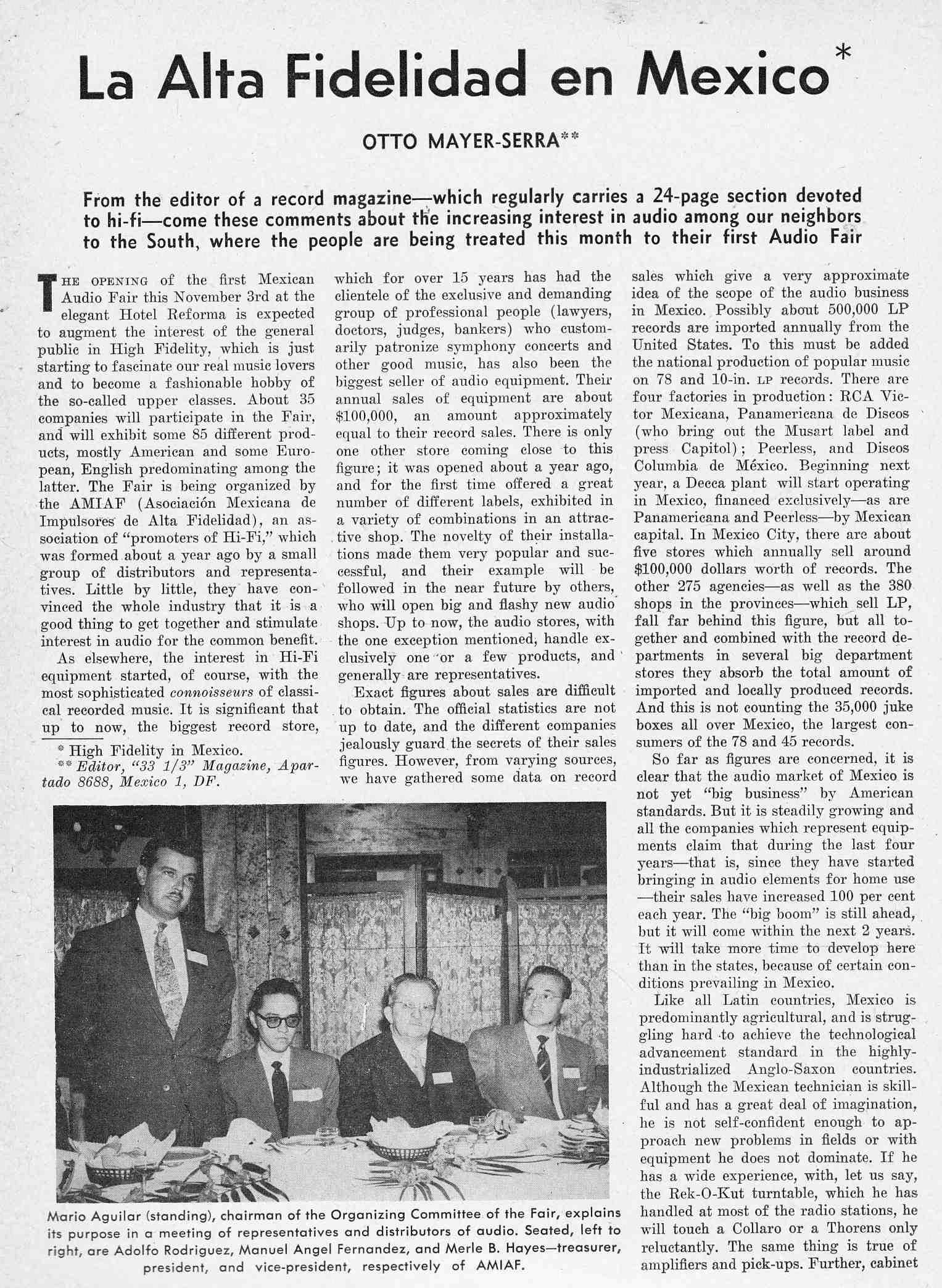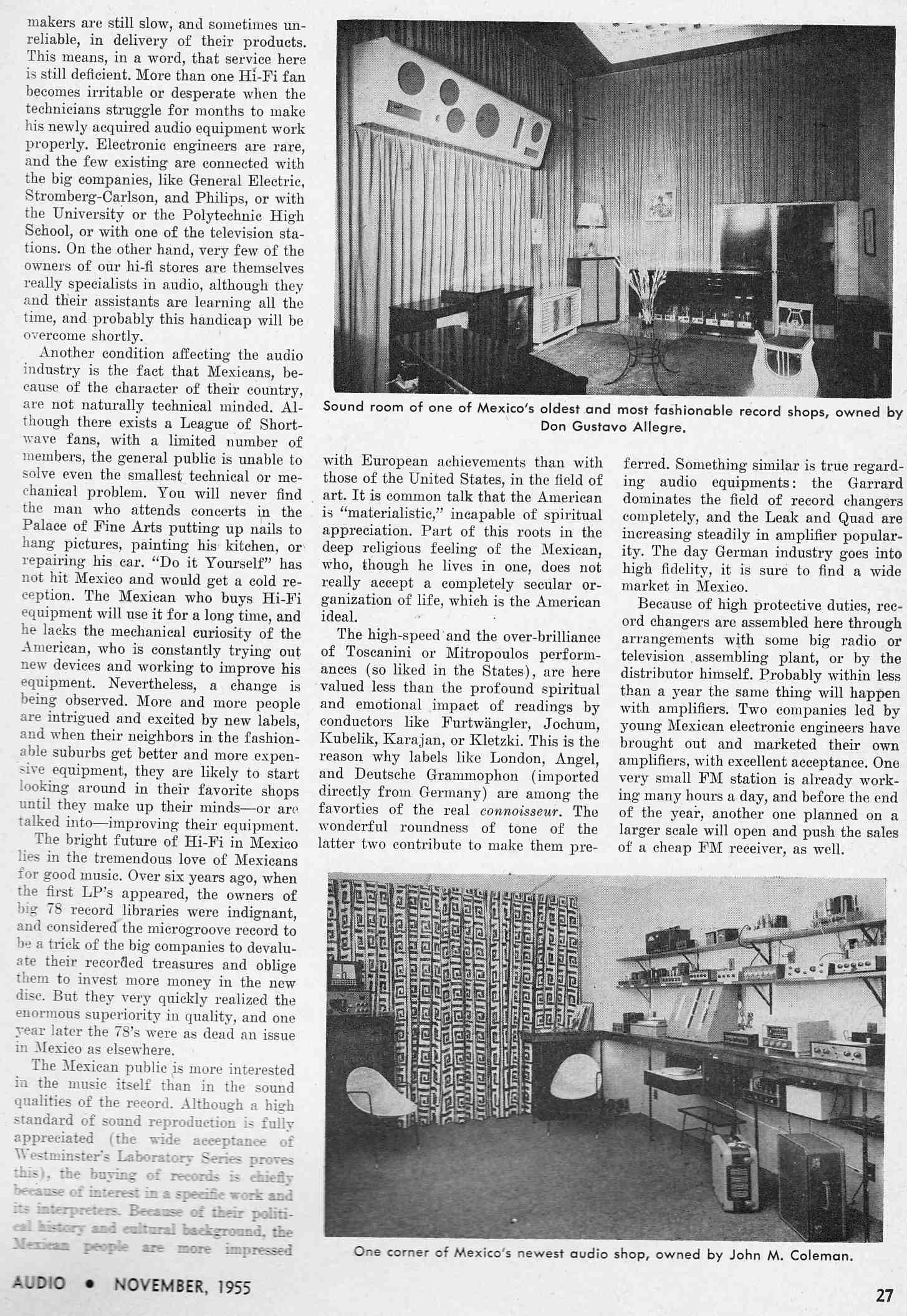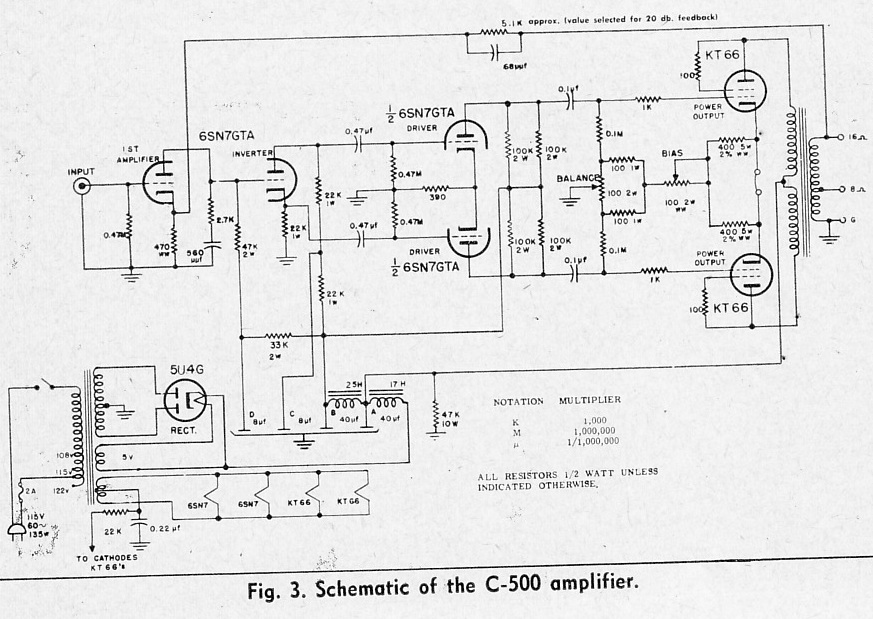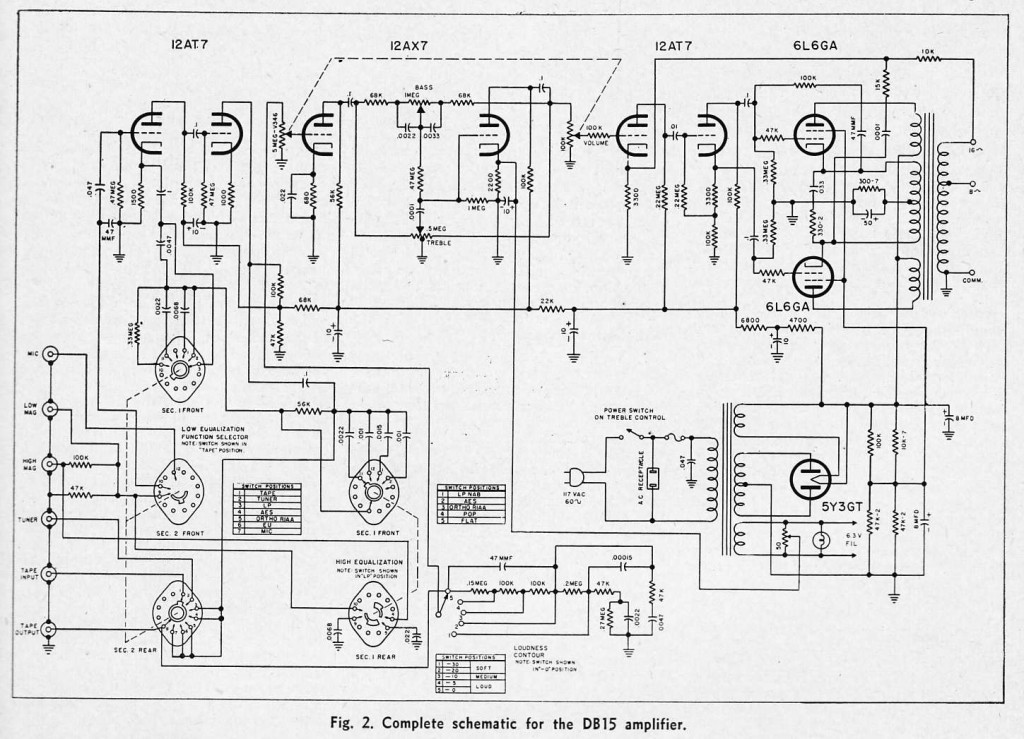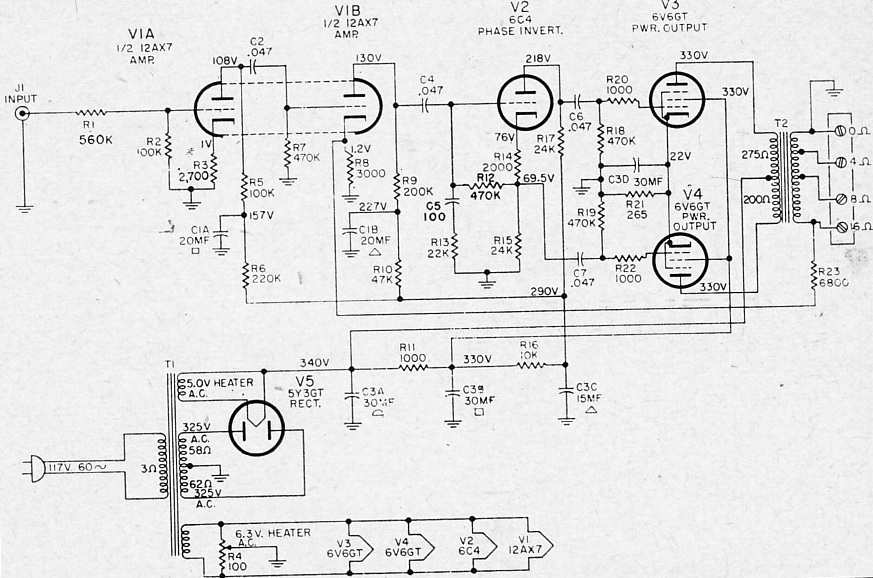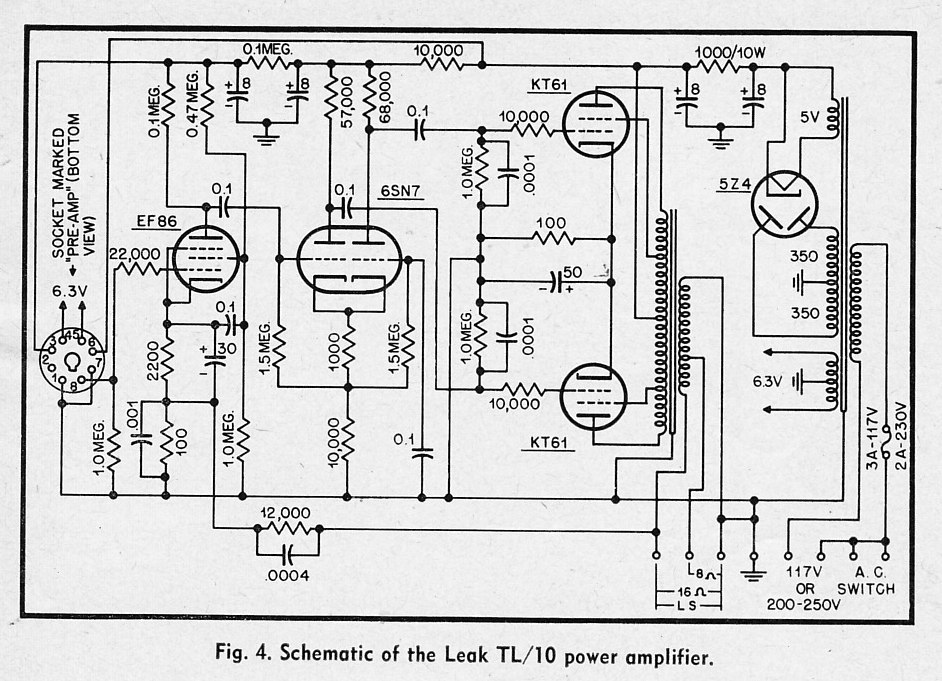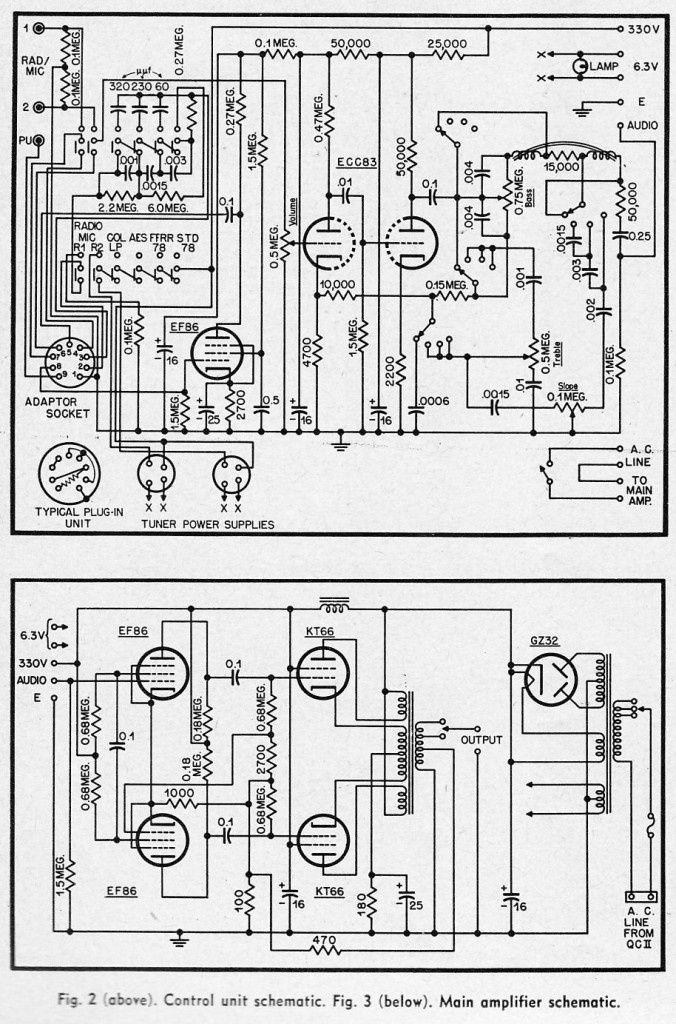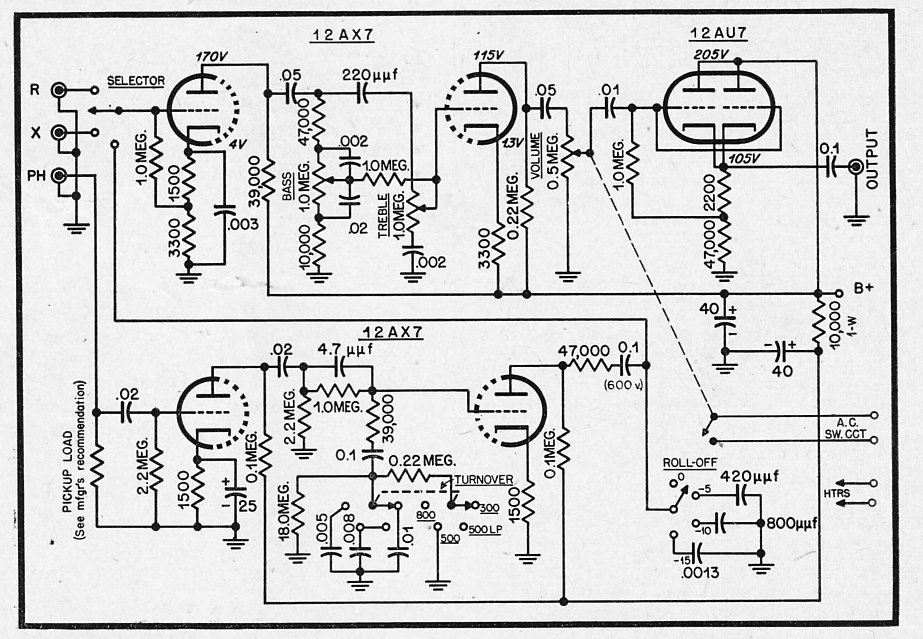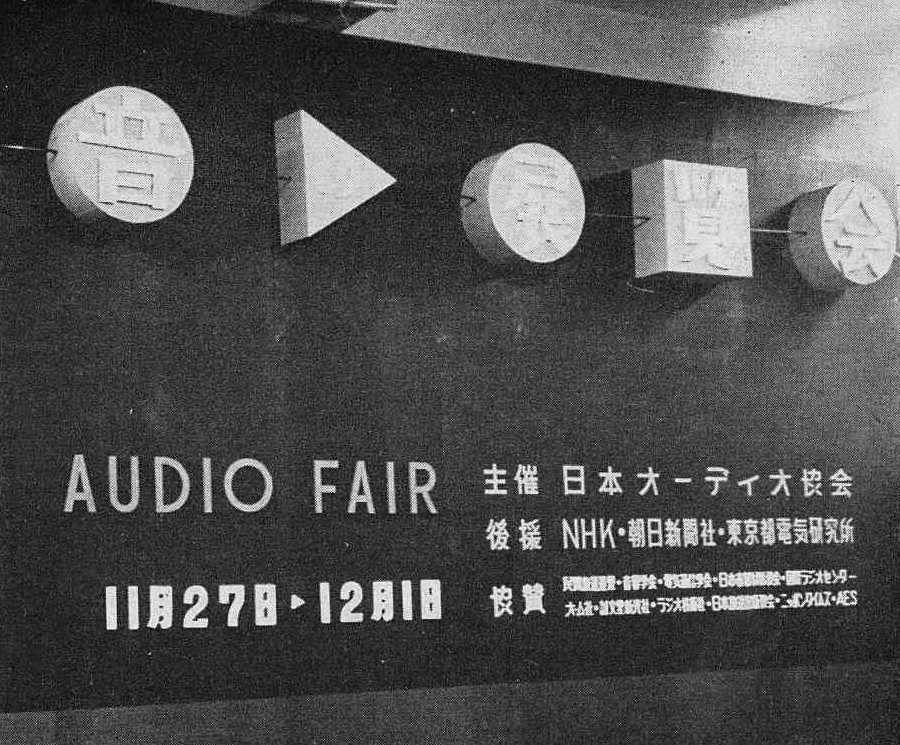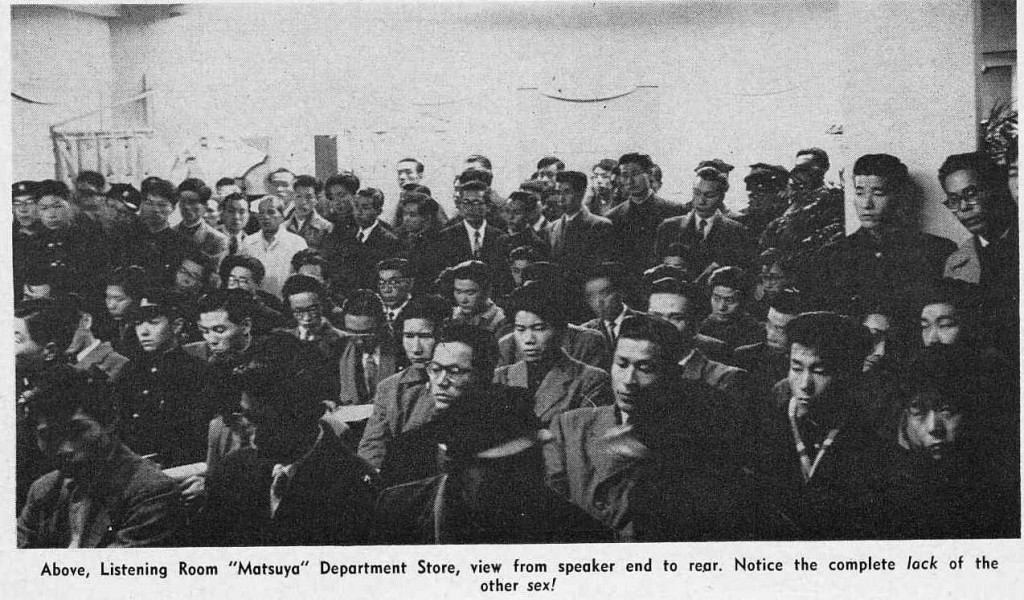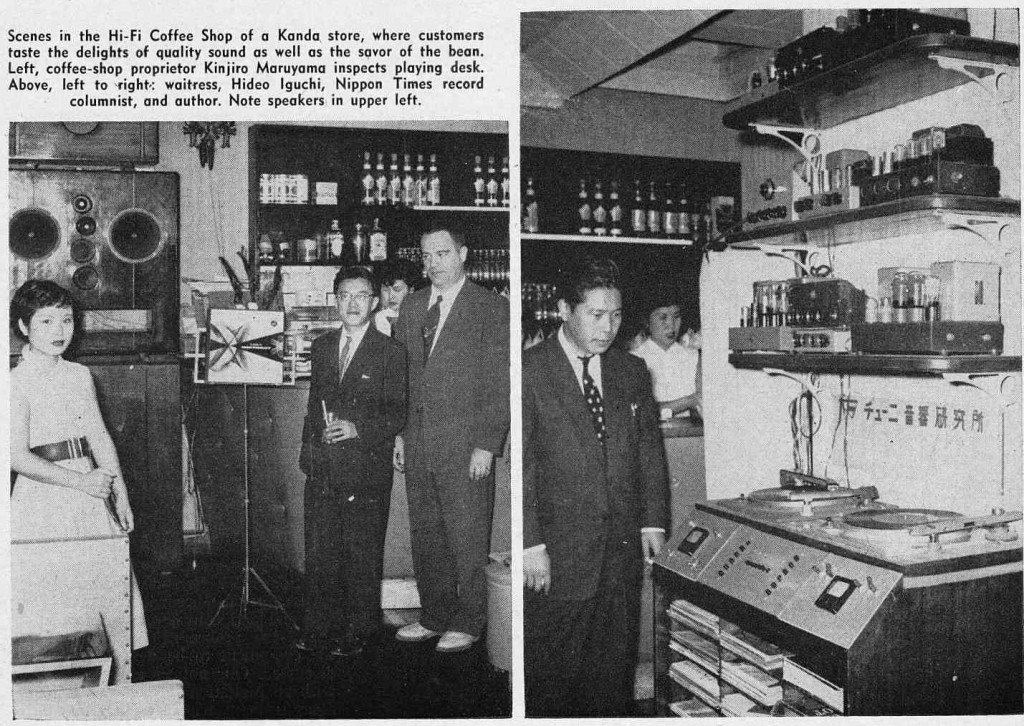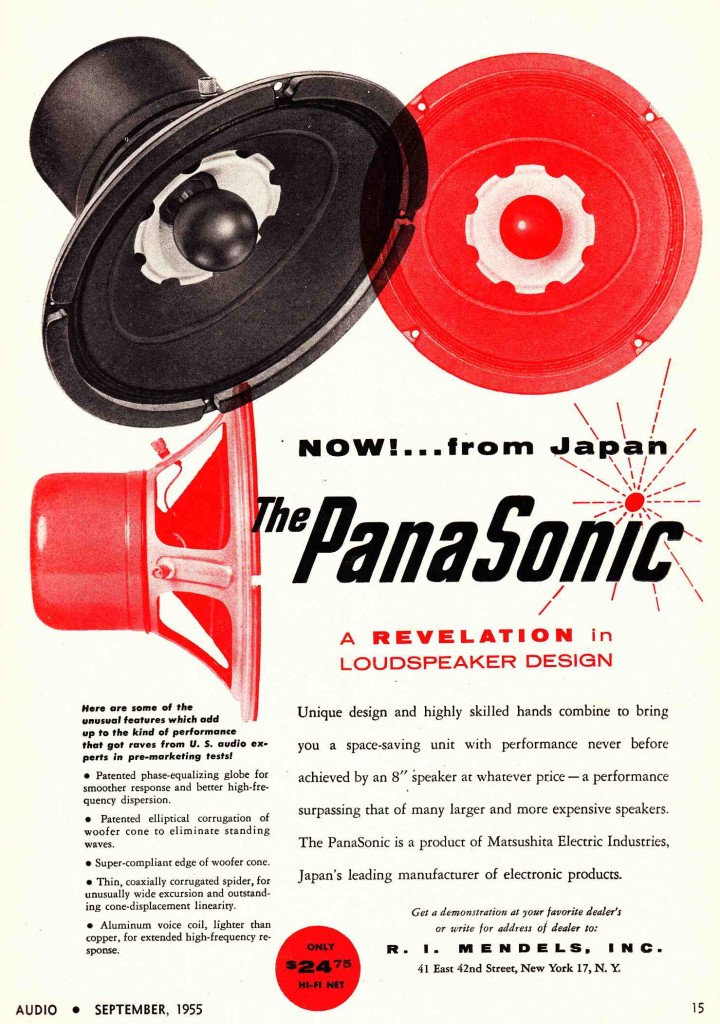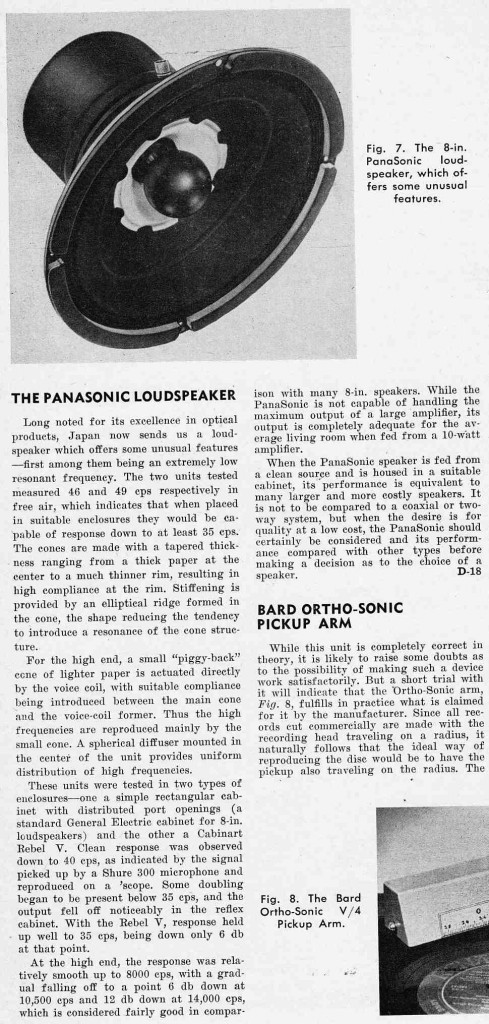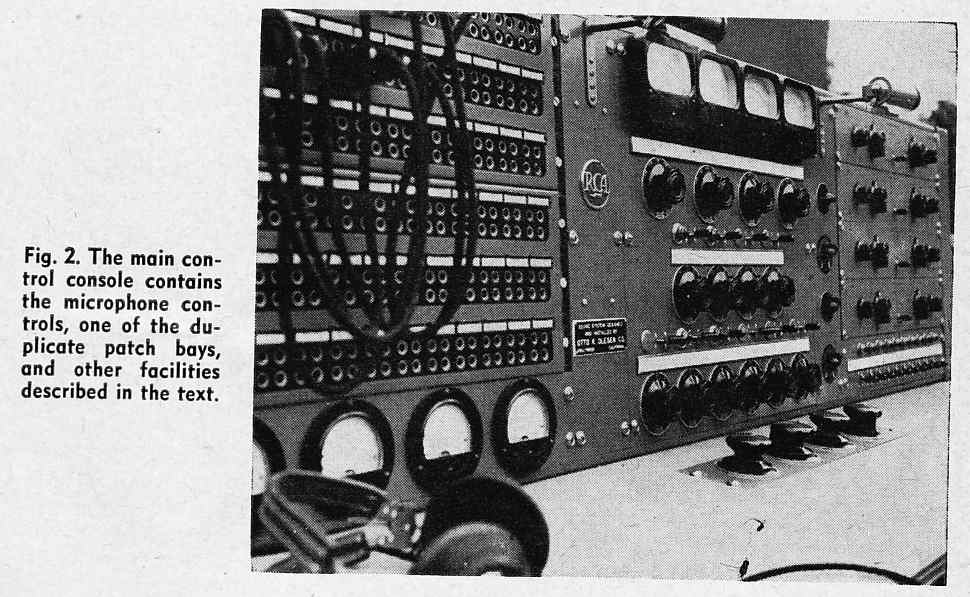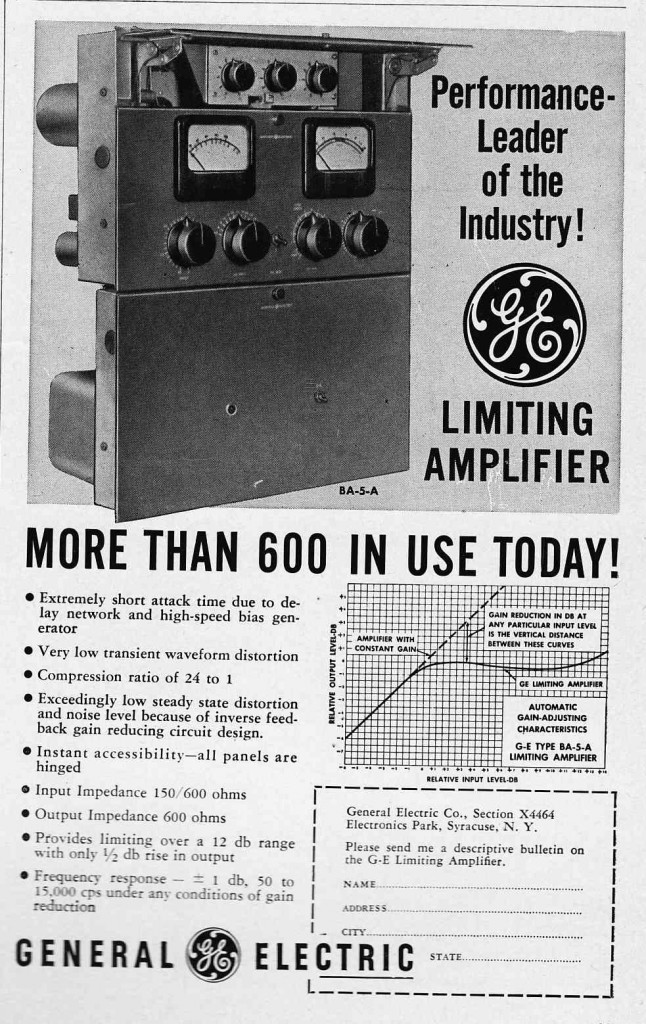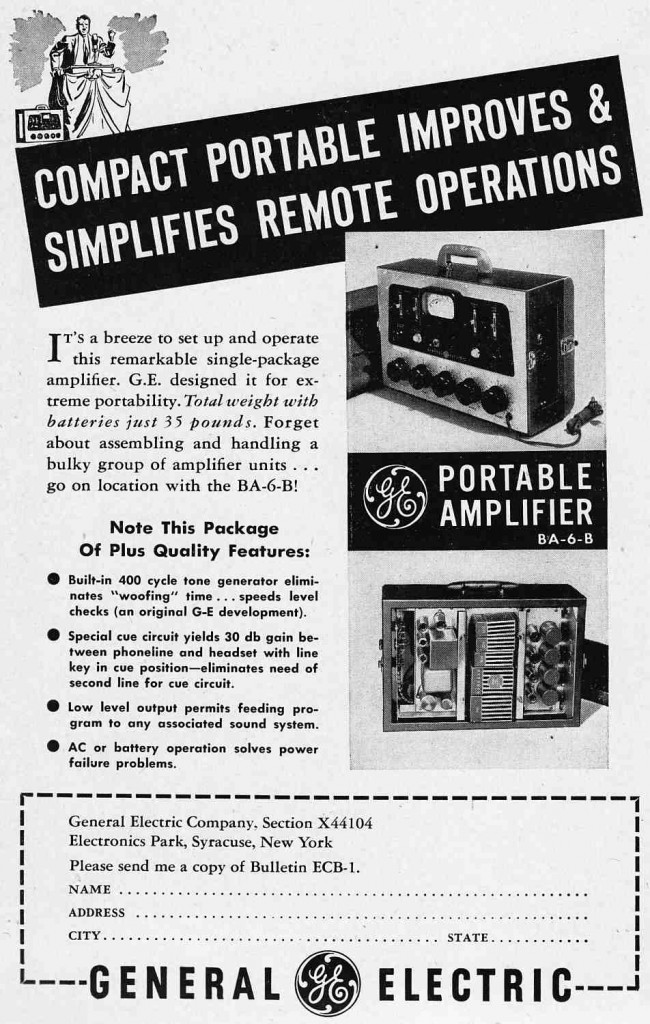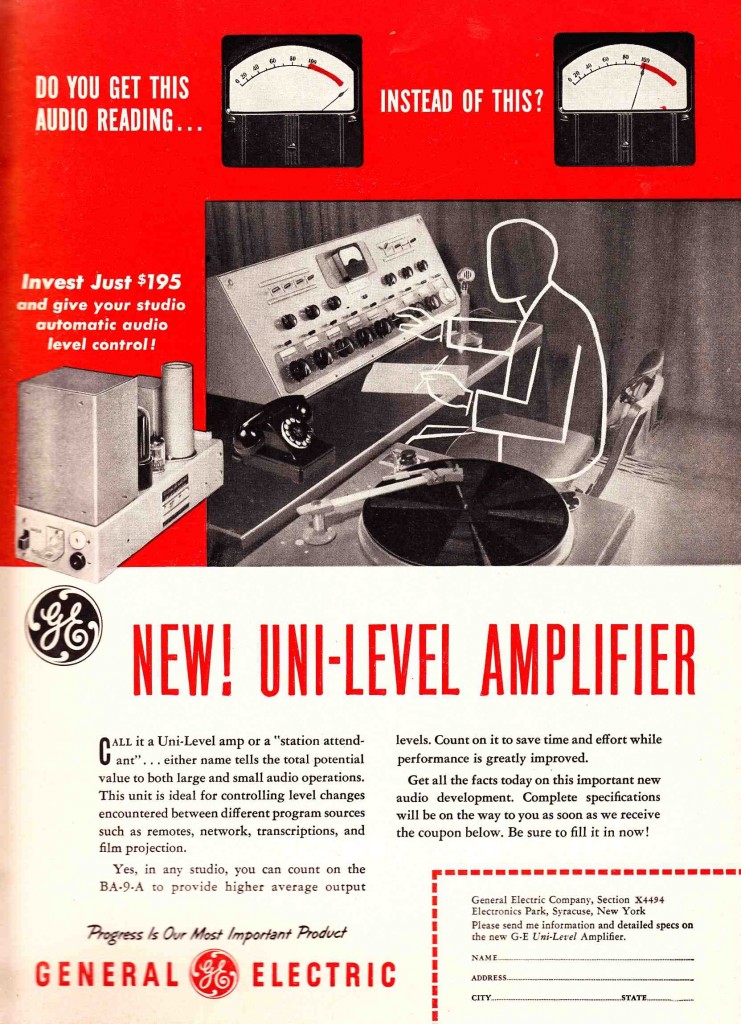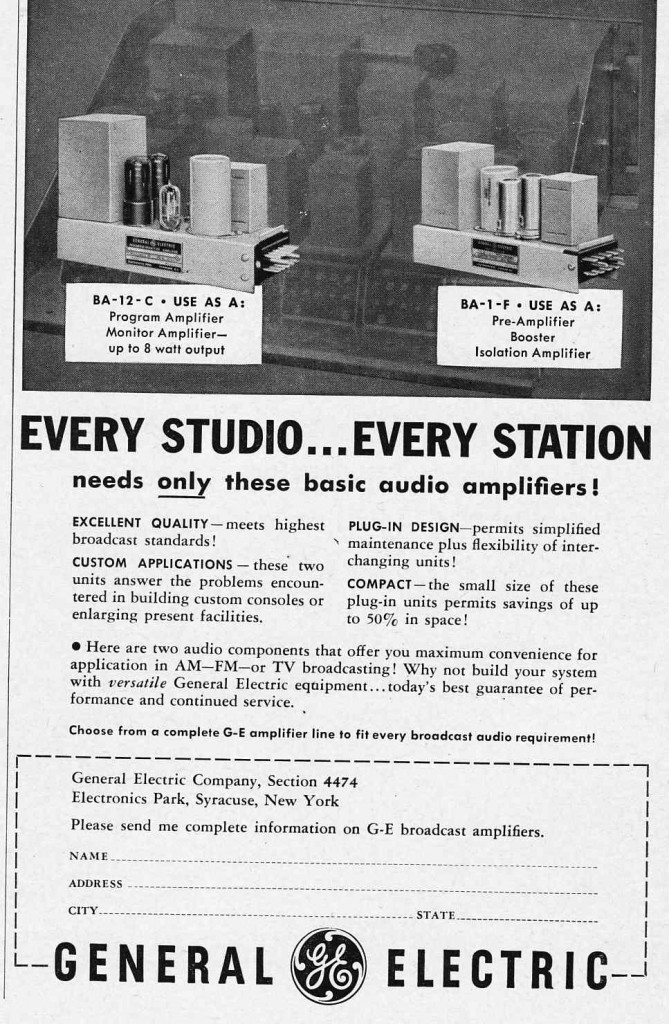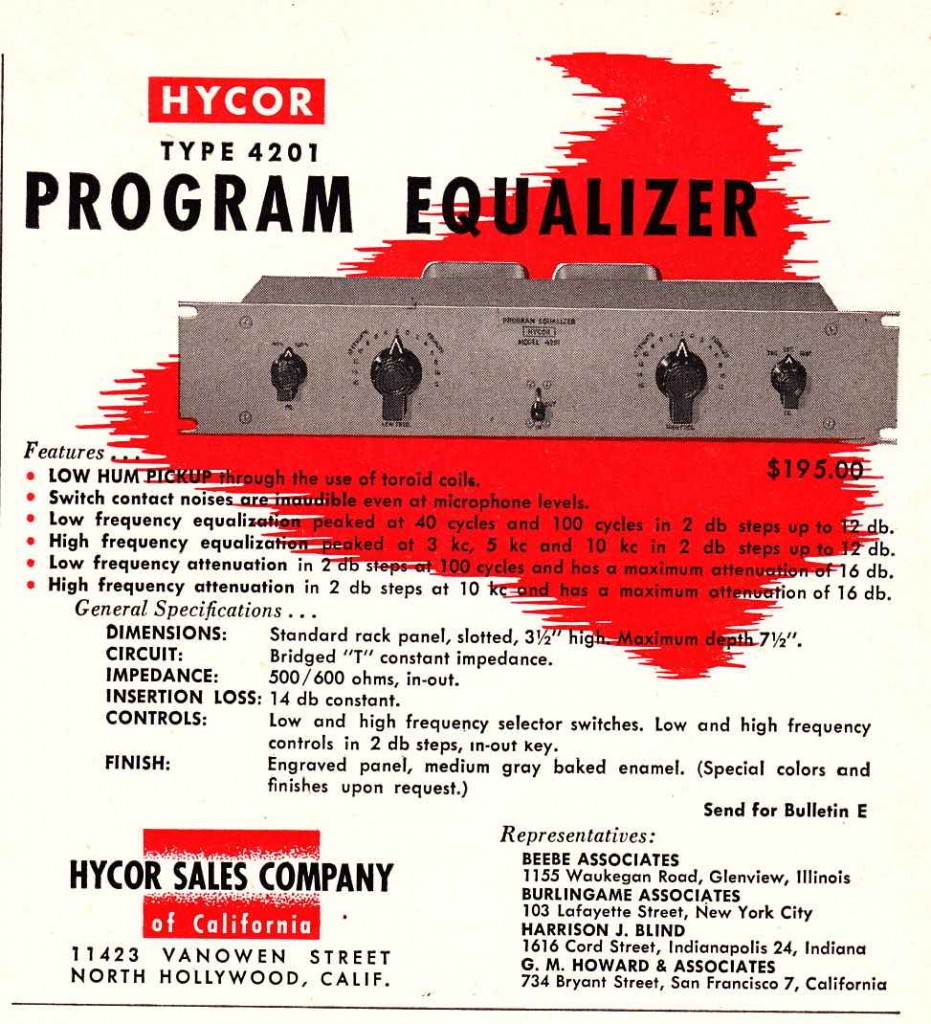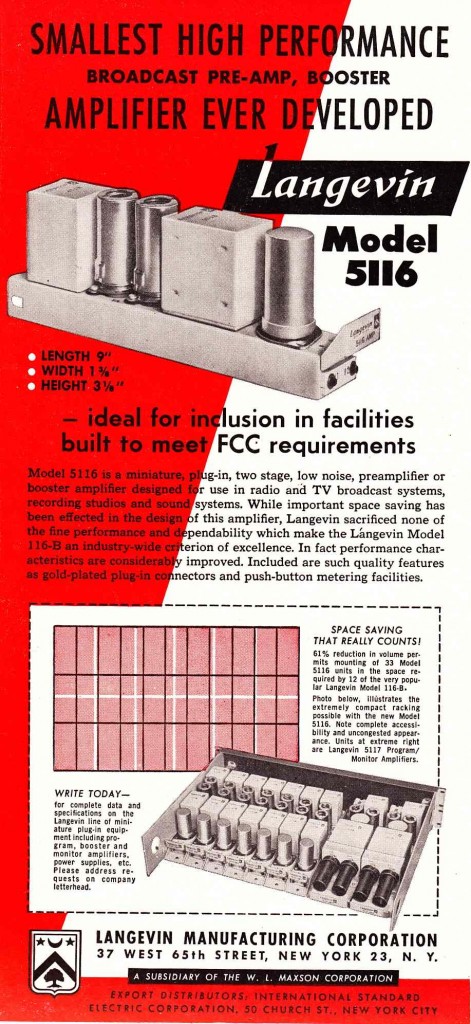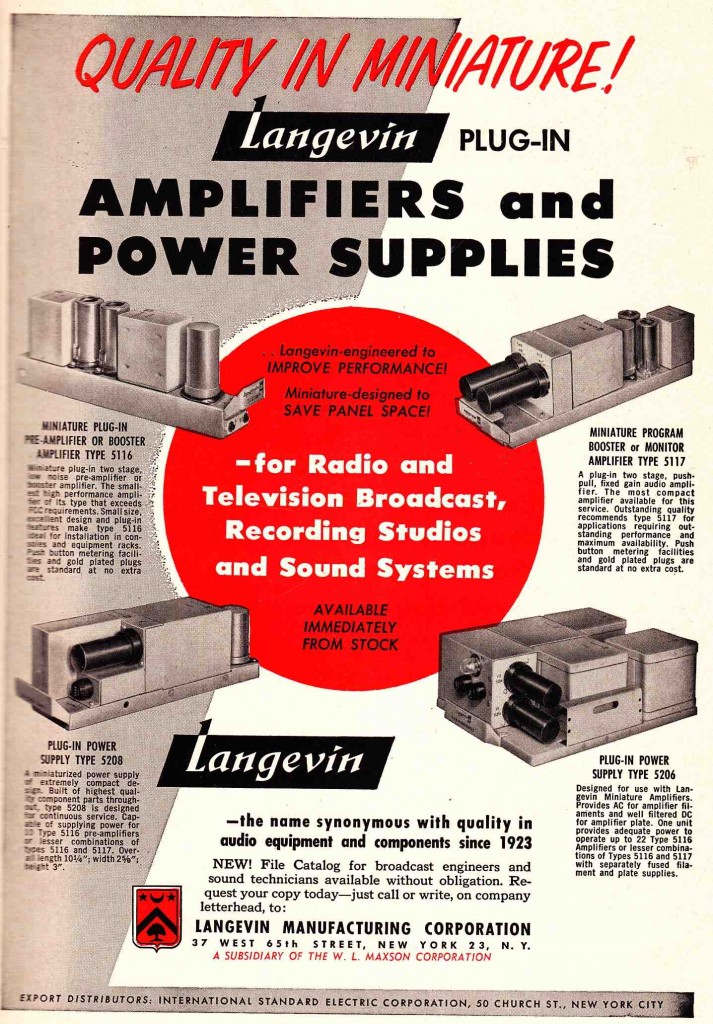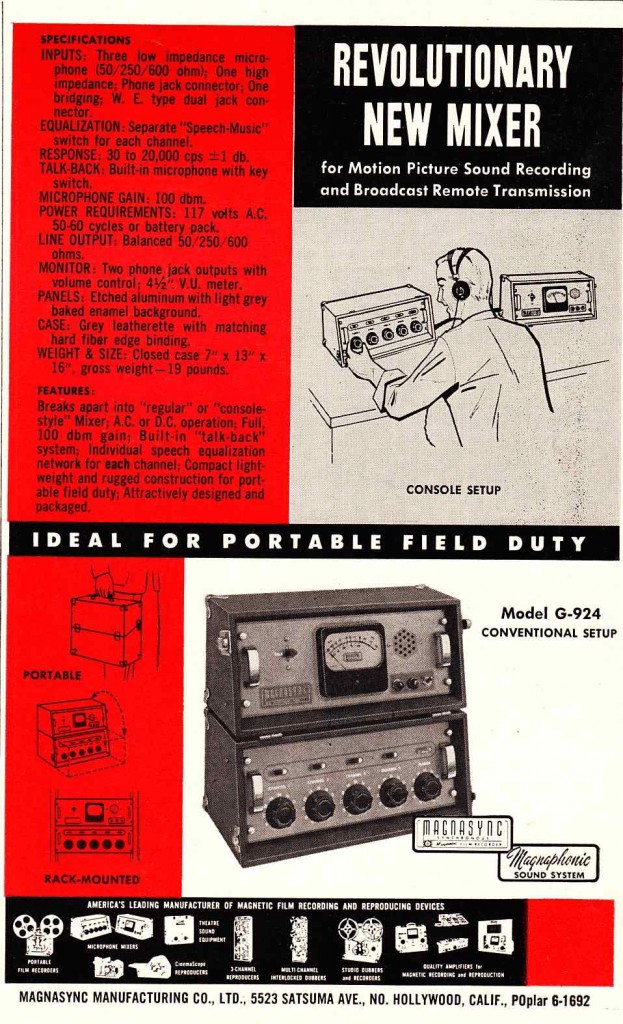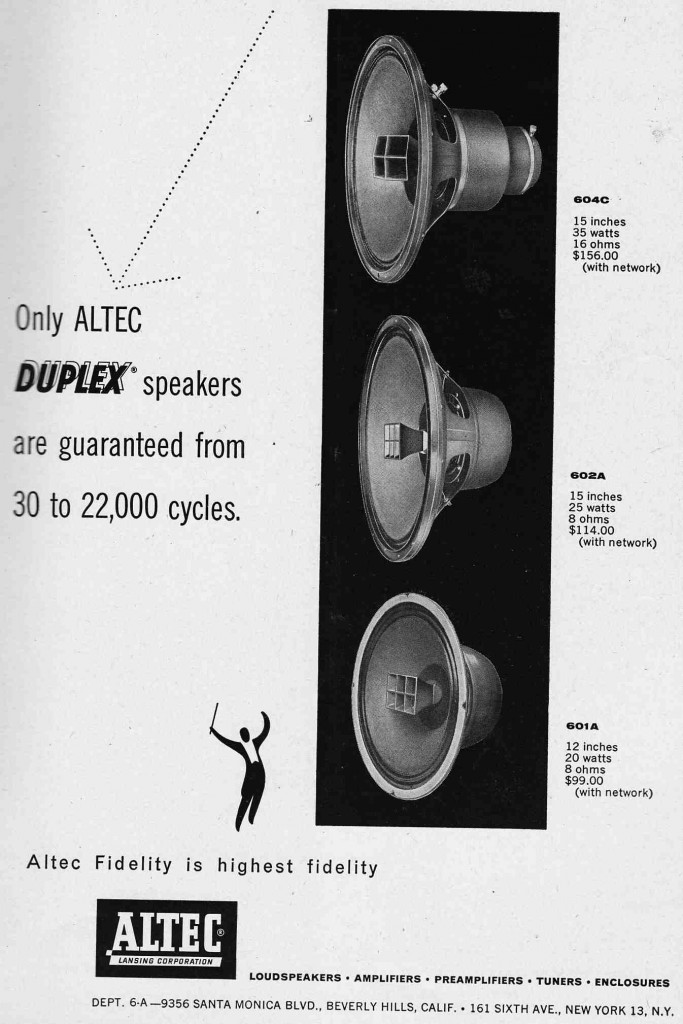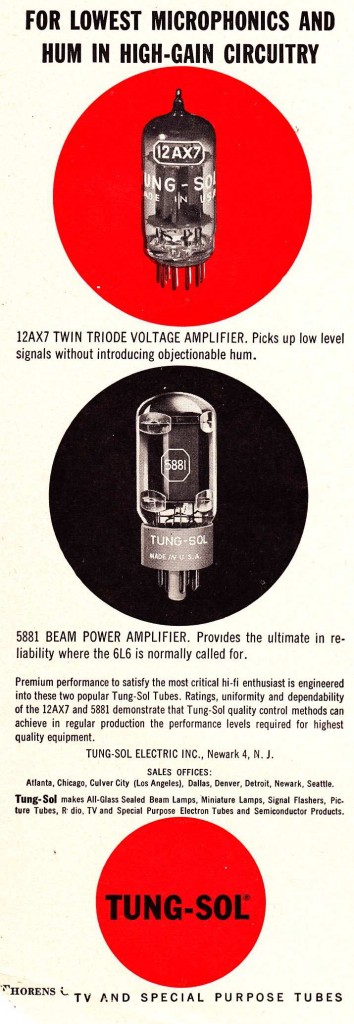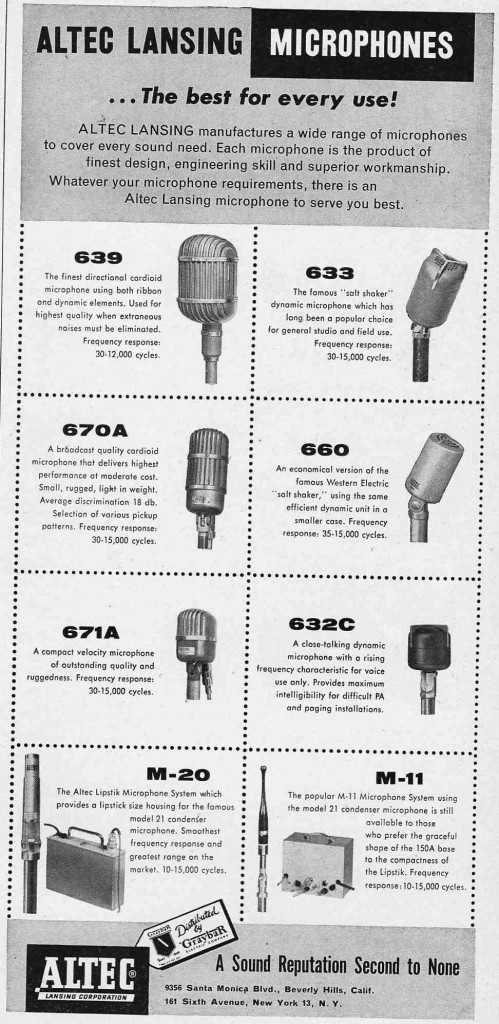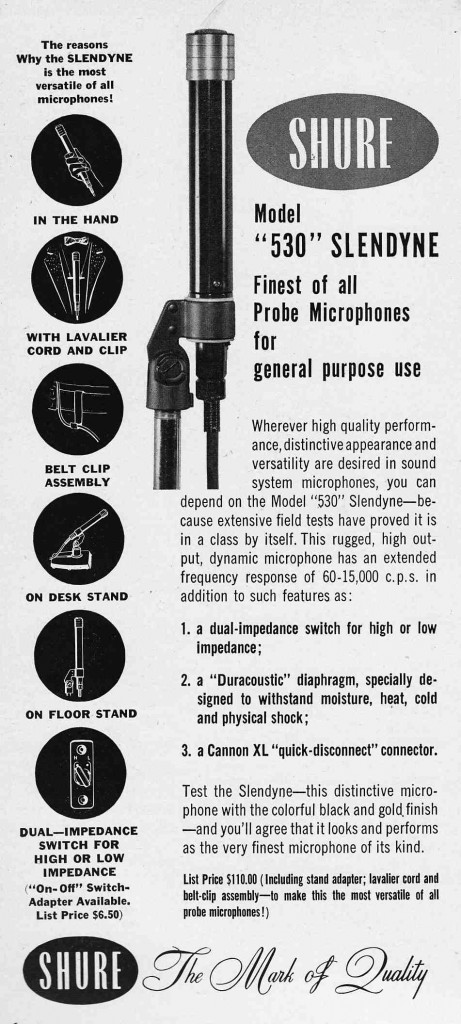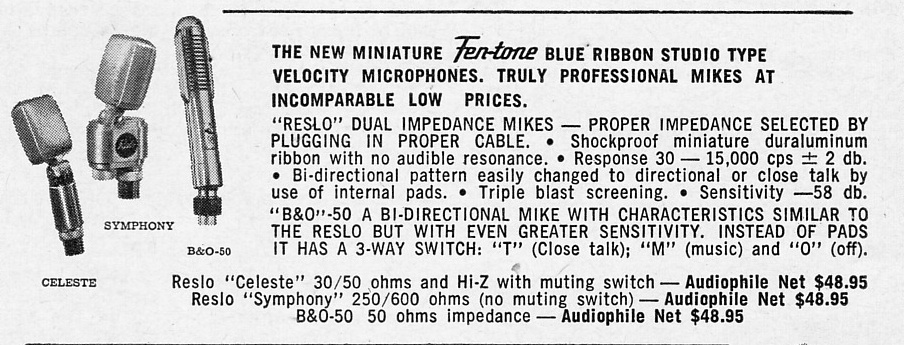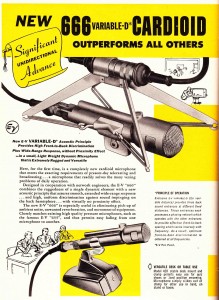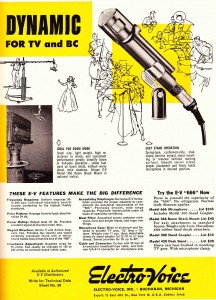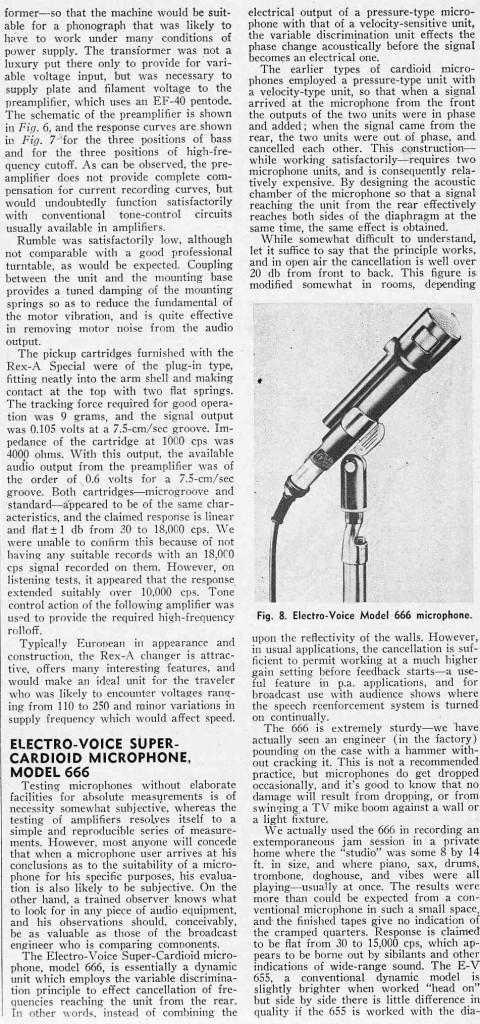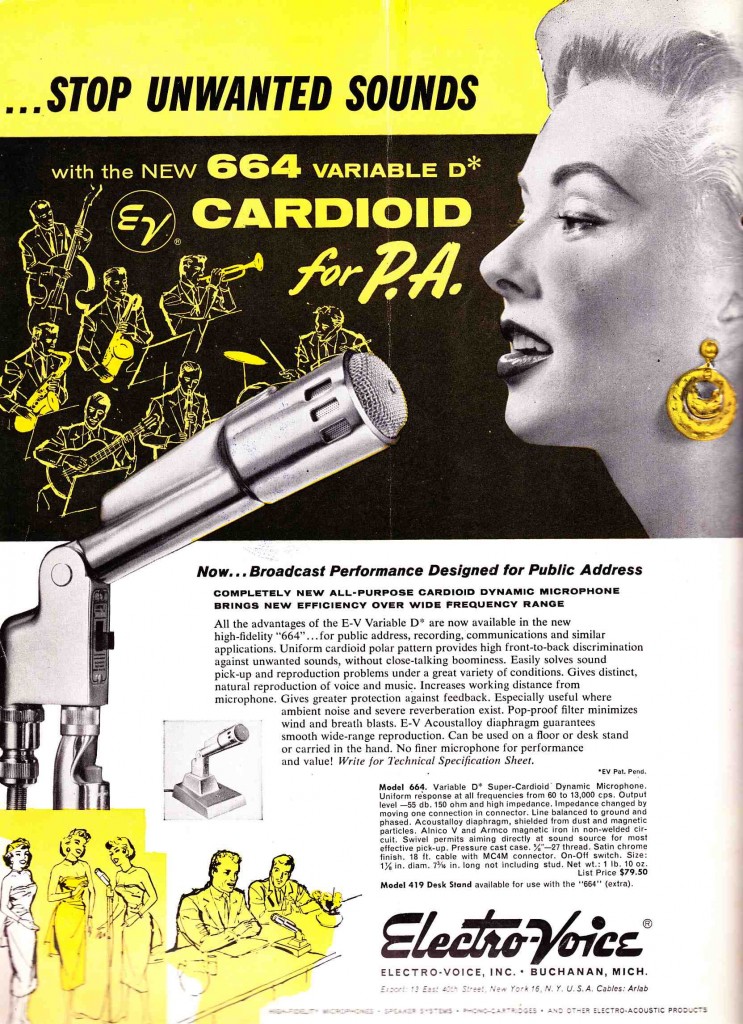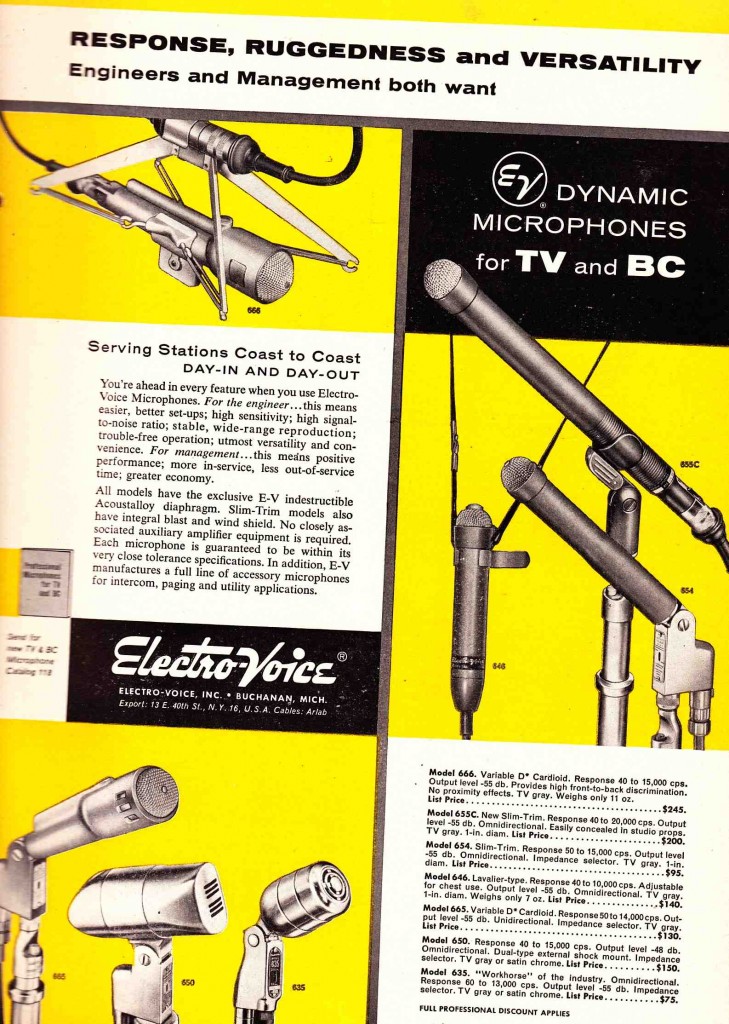The RCA OP-6 ‘Portable Amplifier’ is one of a handful of truly visually-iconic vintage mic preamps. The OP-6 was designed as a “remote,” as-in, ‘on-location’ single-channel mic preamp for radio station broadcasts. It uses three 1620 (6J7) tubes – most mic pre designs of the period use two. Furthermore, the 1620s are in pentode operation rather than triode. The result: a ton of gain. 95db, apparently. This is almost twice as much gain as the classic RCA BA1 and BA2 mic pres. OP-6s are in high demand – click here for a seller asking $2900. Further indication: Blackbird Rentals in Nashville has thirteen in stock as rental units. The first time I heard an OP-6 in use was at Blackbird; I was producing/directing a live-in-the-studio performance for Martina McBride and John McBride was engineering; he was using the OP-6 for something… I can’t remember what exactly. Anyway, it caught my eye and we talked about it a bit; later I learned that he has an especially strong appreciation for these units. A strong endorsement coming from the man who likely owns more vintage pro audio gear than anyone who ever has or ever will live.
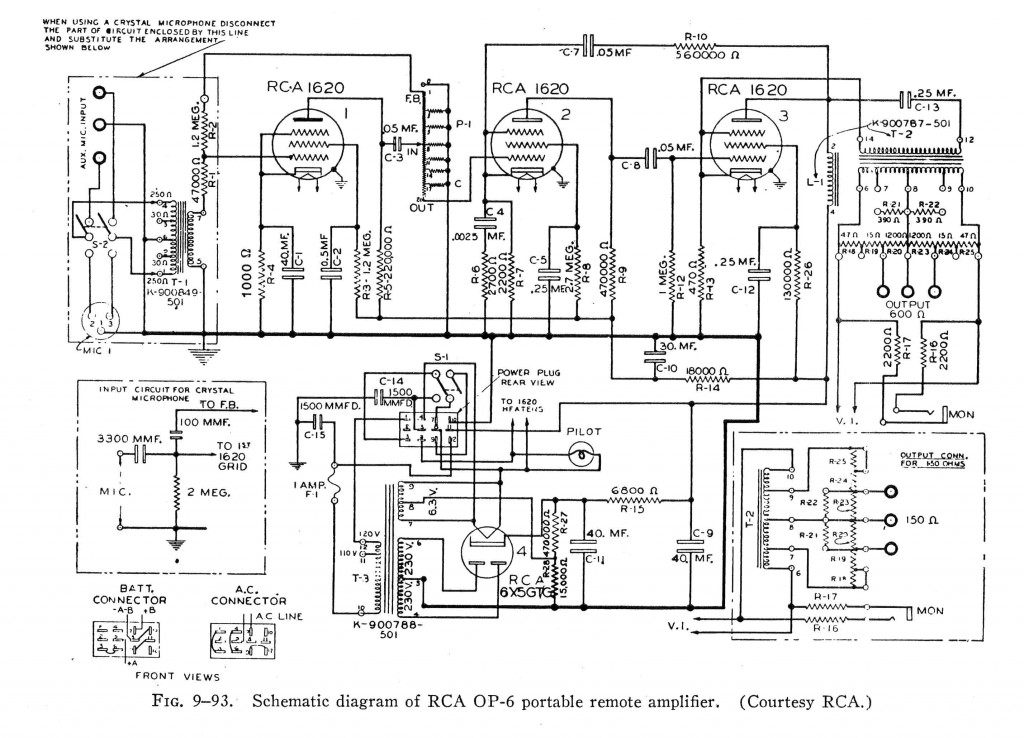 The OP-6 schematic is pictured above (this file is readily available in high-res on the internet). So anyhow, if we consider how in-demand the OP-6 is, it seems striking that no one offers a modern equivalent for sale, even on a small-scale level. If you take a close look at the circuit, the reasons become apparent. There are two big obstacles to re-creating even a semblance of an OP-6. First is the input attenuator:
The OP-6 schematic is pictured above (this file is readily available in high-res on the internet). So anyhow, if we consider how in-demand the OP-6 is, it seems striking that no one offers a modern equivalent for sale, even on a small-scale level. If you take a close look at the circuit, the reasons become apparent. There are two big obstacles to re-creating even a semblance of an OP-6. First is the input attenuator:
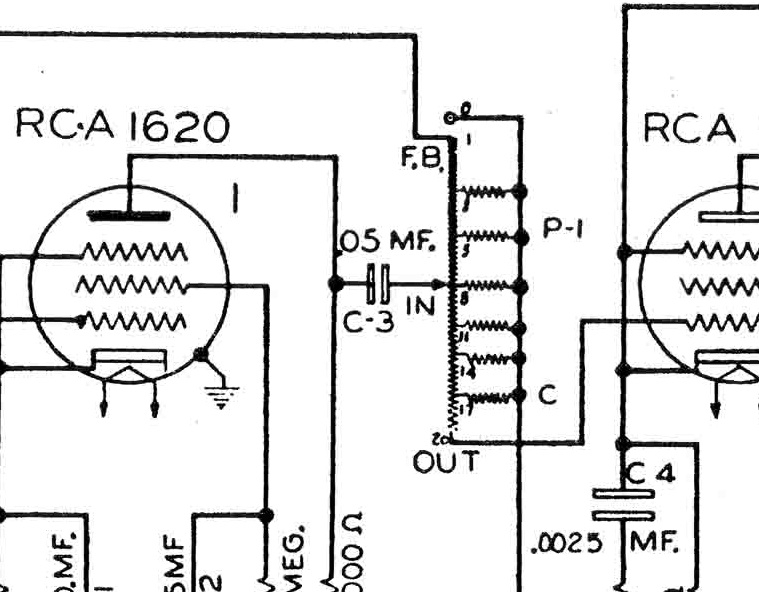 Sure, it’s a voltage divider; probably constant impedance; but what exactly are the values? And what about that value of that feedback path issuing from the attenuator back to the input stage? If I could get my hands on an original OP-6 and open up the attenuator, sure I could maybe sort it out. But I imagine that re-creating that part on custom order could cost hundreds of dollars; frankly I have no idea.
Sure, it’s a voltage divider; probably constant impedance; but what exactly are the values? And what about that value of that feedback path issuing from the attenuator back to the input stage? If I could get my hands on an original OP-6 and open up the attenuator, sure I could maybe sort it out. But I imagine that re-creating that part on custom order could cost hundreds of dollars; frankly I have no idea.
The second obstacle to re-creating the OP-6 is the output stage choke.
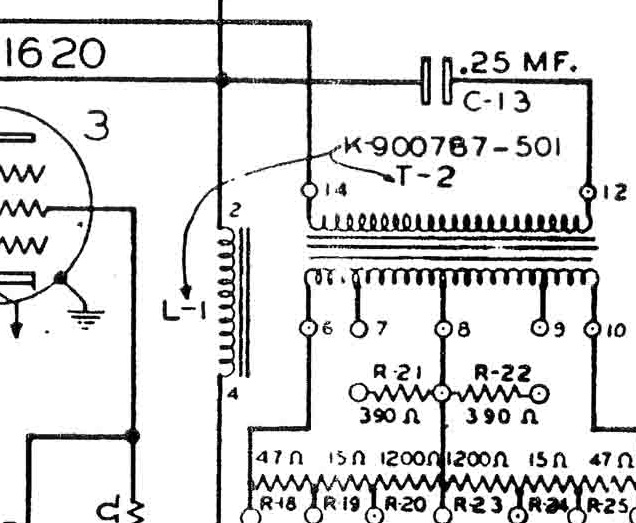 The choke is designated L-1 in the schematic. Curiously enough, it’s actually physically part of the output transformer. Based on this fact, there is zero chance that this was an off-the-shelf choke, say a UTC for example, that we could track down. OK – but the crucial value of a choke in a circuit like this is the inductance. So long as the voltage an current handling values are sufficient, any choke of same inductance should give a similar result. Now again, if I had an original OP-6, I could measure the inductance and maybe a current off-the-shelf part exists to satisfy the requirements. But… I don’t think anyone out there is gonna send me their prized OP-6 to open up. And $2900 is a pretty stiff R+D cost. So what do we do? Well, in the absence of any actual electrical engineering training, I looked for some good advice and then I guessed.
The choke is designated L-1 in the schematic. Curiously enough, it’s actually physically part of the output transformer. Based on this fact, there is zero chance that this was an off-the-shelf choke, say a UTC for example, that we could track down. OK – but the crucial value of a choke in a circuit like this is the inductance. So long as the voltage an current handling values are sufficient, any choke of same inductance should give a similar result. Now again, if I had an original OP-6, I could measure the inductance and maybe a current off-the-shelf part exists to satisfy the requirements. But… I don’t think anyone out there is gonna send me their prized OP-6 to open up. And $2900 is a pretty stiff R+D cost. So what do we do? Well, in the absence of any actual electrical engineering training, I looked for some good advice and then I guessed.
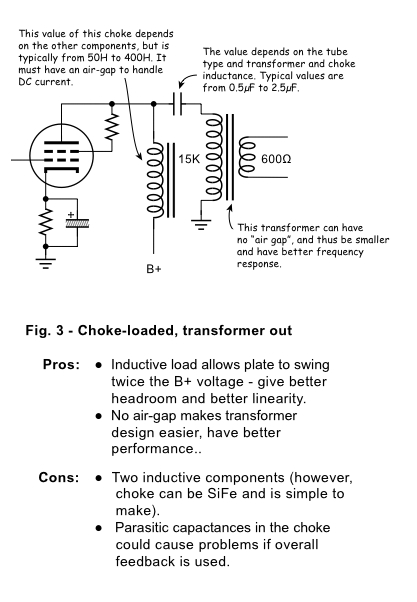 The very friendly+talented John Atwood sent me the diagram above; in response to what I can’t recall. This diagram explains why the choke is necessary in order to get the best possible performance from a single-ended vacuum tube line output stage. Looks pretty similar to our OP-6 output stage, right? Based on this… I made a wild guess. I ordered the very inexpensive Hammond 156C choke. 150mh inductance with 8ma current capacity. 8ma might be a little low, but I have found that Hammond really undersells the specs of their transformers, so I’m not worried.
The very friendly+talented John Atwood sent me the diagram above; in response to what I can’t recall. This diagram explains why the choke is necessary in order to get the best possible performance from a single-ended vacuum tube line output stage. Looks pretty similar to our OP-6 output stage, right? Based on this… I made a wild guess. I ordered the very inexpensive Hammond 156C choke. 150mh inductance with 8ma current capacity. 8ma might be a little low, but I have found that Hammond really undersells the specs of their transformers, so I’m not worried.
Alright so now we’ve got a choke that might work. What about that input attenuator? The best course of action would probably be to get a used 100k Daven T-pad, but without implementing the feedback path that the stock OP-6 attenuator has, it seems like this is slightly pointless vis-a-vis maintaining originality. So instead: I used the input stage from my favorite, yes yet again, the RCA BA-2.
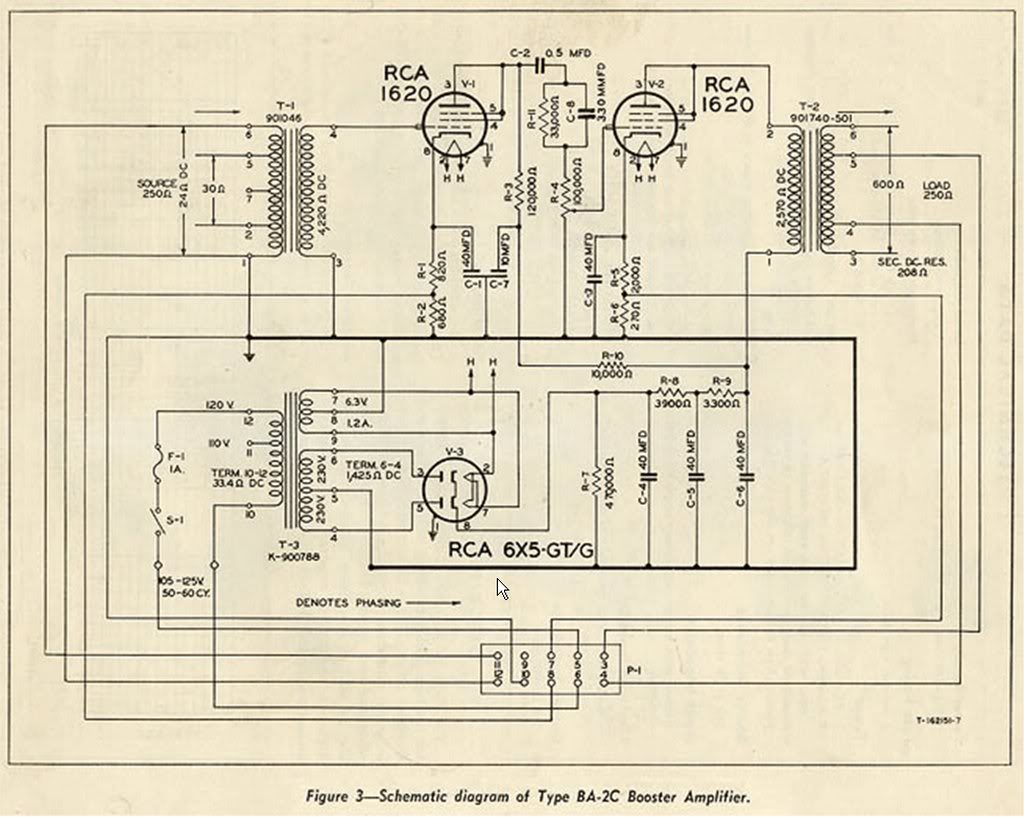 The BA-2 schematic is pictured above. The input stage uses a 1620 tube, wired as a triode, with a 100k ohm pot following it. So I just took this input stage, up to the pot output, and wired it in front of the second two OP-6 stages (starting at the grid of stage #2). When I did this, the whole system worked fine except when the volume pot was a zero (IE., when the grid of tube #2 is shorted to ground). This caused weird noise and a little humming. Not sure if this is due to the negative feedback in that stage, or if this is simply a general characteristic of 1620s when they are run in pentode – but it sounded awful. The easy solution? I added a 1M resistor from the grid to ground, and isolated this from the pot with a 1K grid-stopper resistor. Done and done. The BA2/OP6 Hybrid is born.
The BA-2 schematic is pictured above. The input stage uses a 1620 tube, wired as a triode, with a 100k ohm pot following it. So I just took this input stage, up to the pot output, and wired it in front of the second two OP-6 stages (starting at the grid of stage #2). When I did this, the whole system worked fine except when the volume pot was a zero (IE., when the grid of tube #2 is shorted to ground). This caused weird noise and a little humming. Not sure if this is due to the negative feedback in that stage, or if this is simply a general characteristic of 1620s when they are run in pentode – but it sounded awful. The easy solution? I added a 1M resistor from the grid to ground, and isolated this from the pot with a 1K grid-stopper resistor. Done and done. The BA2/OP6 Hybrid is born.
*************
********
***
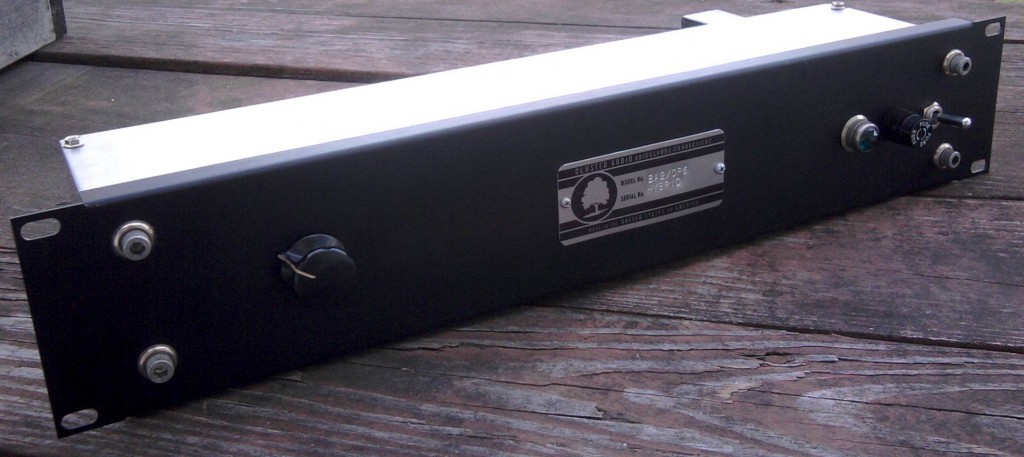
 The finished piece is shown above. I used a 6X5 rectifier tube like the OP-6 uses; in fact, with the exception of using DC filament voltage, I kept the power supply the same as the OP-6.
The finished piece is shown above. I used a 6X5 rectifier tube like the OP-6 uses; in fact, with the exception of using DC filament voltage, I kept the power supply the same as the OP-6.
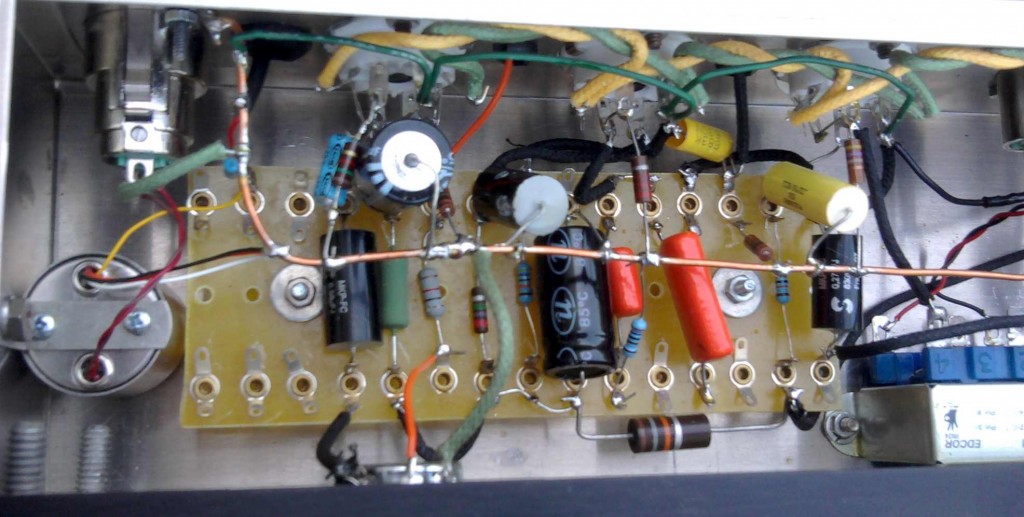 The audio portion of the circuit is shown above. What with the three pentode stages and feedback paths, this is extremely complicated for a mic preamp. A lot of parts. On the left you can see my usual Jensen 115 input transformer. Audio caps are a mix of Solen, sprague, and some random Russian ones. Basically whatever would fit. Resistors are random as well; now that I have confirmed that the piece works well, I will probably replace the carbon-comp resistors in the B+ chain with some quieter modern resistors. On the right is the output transformer. I used an edcor 15K: 600; $10.22!
The audio portion of the circuit is shown above. What with the three pentode stages and feedback paths, this is extremely complicated for a mic preamp. A lot of parts. On the left you can see my usual Jensen 115 input transformer. Audio caps are a mix of Solen, sprague, and some random Russian ones. Basically whatever would fit. Resistors are random as well; now that I have confirmed that the piece works well, I will probably replace the carbon-comp resistors in the B+ chain with some quieter modern resistors. On the right is the output transformer. I used an edcor 15K: 600; $10.22!
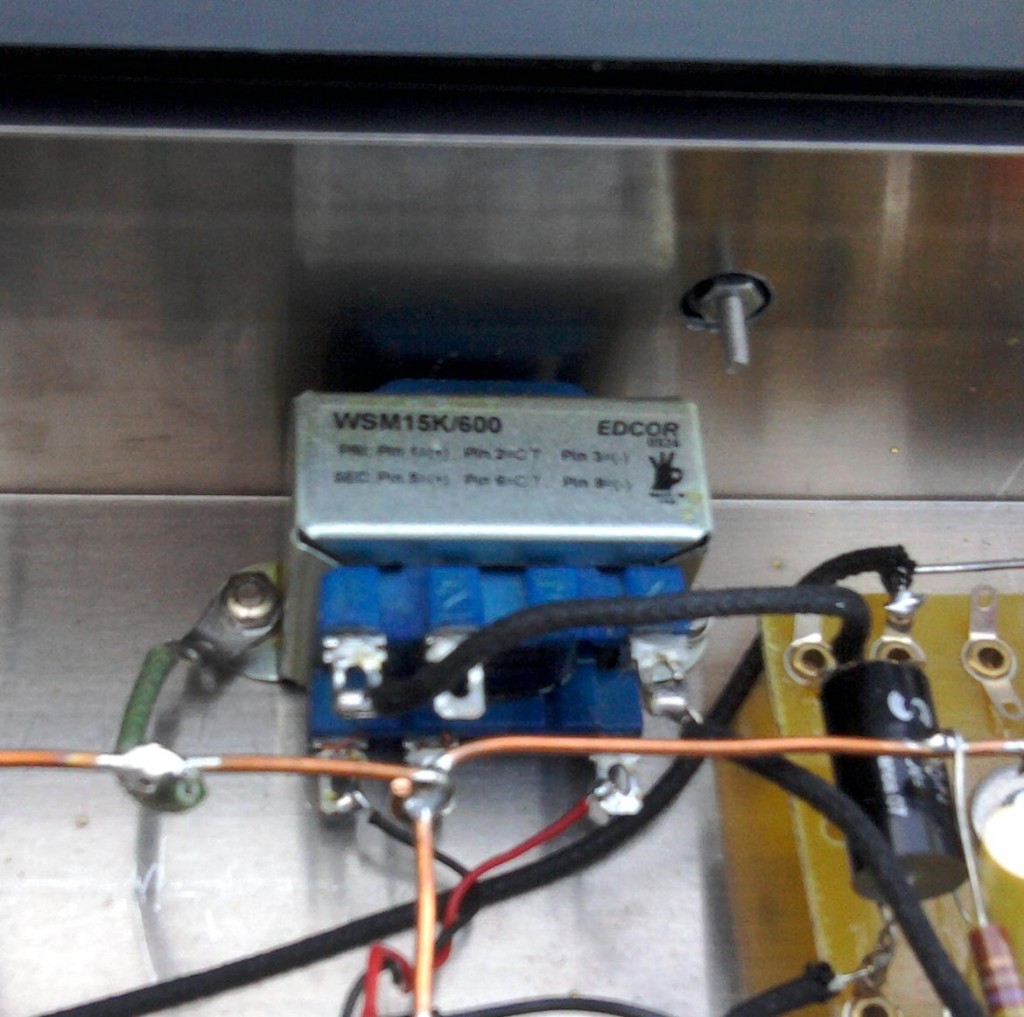 Even though this edcor is unshielded, there is zero hum following the volume pot. And as for performance? I did a frequency sweep through the entire unit; response is absolutely flat from 15hz to 10k hz. At 10k there is a rise of about 1db up to 22khz, at which point response begins to fall of pretty rapidly. This is really excellent performance considering the inexpensive transformers. I did not measure the gain but there is a lot of. The output level can get extremely hot.
Even though this edcor is unshielded, there is zero hum following the volume pot. And as for performance? I did a frequency sweep through the entire unit; response is absolutely flat from 15hz to 10k hz. At 10k there is a rise of about 1db up to 22khz, at which point response begins to fall of pretty rapidly. This is really excellent performance considering the inexpensive transformers. I did not measure the gain but there is a lot of. The output level can get extremely hot.
Anyhow. That’s it for now. As soon as I have a minute I will provide some audio test examples; I’ll post some A/B examples of this unit versus an API 512, hopefully with both acoustic gtr and drums.
Thanks to DW at EMRR for helpful suggestions regarding this project.
***UPDATE*** Listening test has been done and results are posted here.
